Liane Davey's Blog, page 3
March 9, 2025
How to Manage Job Stress
The stats aren’t good. Large percentages of people are feeling stressed at work, many at acute levels or for prolonged periods. Stress affects the quality of your work, your interactions with your customers or colleagues, and your sense of physical and mental well-being. It’s worth paying attention to how you manage job stress. In this post, we’ll talk about how to recognize stress and deal with it in the moment. Next time, we’ll work on reducing the root causes of job stress.
What is Stress?Stress is the body’s response to real or perceived threats. It can be a positive force that provides the energy and motivation to act, like when the stress of being late for the bus helps you to run a little faster. Of course, stress becomes unhealthy when you feel vulnerable but not in control, like watching your kid’s soccer team go down 3-0 in the first half.
In the workplace, stress has the same pluses and minuses. When you have control over the situation, a moderate amount of stress helps you get moving. When you don’t have control, either because you don’t have the authority, skills, or time to respond effectively, stress moves beyond the healthy level and erodes your performance and your state of mind.
It is important to manage your stress to keep it in that useful, moderate range.
Recognize StressTo give yourself a chance to curtail your stress before it becomes overwhelming, you need to learn to recognize it early. Doing so requires self-awareness and a strong connection to what’s going on in your body and your mind.
Your stress response is personal (and probably also situational), but be on the lookout for one or more of these patterns.
FightIs your body responding to the perceived threat by gearing up for a fight? Notice:
Racing heartClenched fists and jawFlushed skinShallow breathingCombative thoughtsHyper focusFlightIs your brain preparing you to escape the threatening situation? If so, you might experience:
Rapid heartbeatIncreased sweatRestlessness and fidgetingRising nauseaExcessive worryDifficulty concentratingFreezeHas the situation immobilized you and left you unable to act? Indicators that you’ve gone into a freeze response include:
Slowed breathingTense musclesBlank staringZoning outFeeling numb or detachedFawnIs your brain telling you to defer and play small to appease the threatening person? You might notice:
Nervous laughterForced smileDropped eye contactPeople pleasingDeference to authoritySelf-criticismYou likely have one of these default reactions to job stress that you recognize better than the others. Learn to recognize your stress response quickly so you can implement the following stress management techniques.
Dealing with Job Stress in the MomentWhen you feel your stress response kick in, try the following:
Pay AttentionMany of us have become experts at ignoring our stress response and pushing through. That’s not healthy. Nor does it allow you to learn from the stress in a way that makes you safer. Notice when your body or mind throws up red flags and take steps to manage the stress constructively rather than ignoring and suppressing it. Try giving your stress response a label or even the stress-addled version of you a nickname. “Ok, Tiger, settle down.”
Breathe DeeplyIn a stressful moment, you want to reverse the breathing pattern that has you in fight or flight mode. You can use different patterns to activate your parasympathetic nervous system, such as box breathing or the 4-7-8 method. In each, the idea is to change the ratio so you’re exhaling for longer. At the start, you might not be able to exhale for long, but after a couple of cycles, you’ll be able to increase the gap between the length of your inhale and exhale. This is helpful because it’s a technique you can use in the middle of a meeting without anyone noticing.
One thing I learned after many years of being stressed and out of breath on the stage is that the instruction “take a deep breath” is both infuriating and futile. When your breathing is shallow, it feels like there’s no room to take a deep breath. The secret is to go the other way: exhale for as long and fully as possible. Once your lungs are empty, your body will naturally fill them back up.
Ground YourselfGrounding is a technique that’s helpful to some people because it shifts your attention away from the stressor and lessens anxiety and panic responses. It’s a quick exercise to bring you back into the present moment. Stop and notice 5 things you can see, 4 things you can touch, 3 things you can hear, 2 things you can smell, and 1 thing you can taste.
Reframe the StoryEarlier, I shared the definition of stress as your body’s response to real or perceived threats. Once you’ve calmed your breathing and grounded yourself in the moment, you can ask whether your brain is feeding you bad information about the nature or magnitude of the threat. Explore the possibility that the stressor is less scary than you initially perceived.
What’s really going to happen if this doesn’t go as well as planned? What are the stakes? Will this matter in four days, four months, or four years? As you ask these questions, many of your answers will include some kind of interpersonal discomfort (they’ll think I did a lousy job, they’ll be upset with me, they’ll give me harsh feedback), but nothing that will be memorable in four days or four months. That’s helpful perspective.
Find an ActionThe antidote to anxiety is action. Once you’re clear on the source of your stress and the importance of the issue, you can choose one thing to do that will meaningfully change your situation. That might be as simple as walking around the block before sitting back down to meet your deadline. Alternatively, it could be resolving to have a conversation with a colleague who has been violating your boundaries by expecting you to respond to messages in the evenings. Taking one meaningful step will help you move beyond your short-term stress response.
Stress is normal and often even helpful. But when your stress triggers unhelpful fight, flee, freeze, or fawn reactions, your performance and relationships can get in the way. Learn your stress signals and practice to find the techniques that can quickly get you back on an even keel.
Stress Versus BurnoutIt’s important to note that stress is different from burnout. Although we often use these words in the same sentence, they reflect very different states. When you’re stressed, your body summons resources to help you protect yourself. Your heart rate increases, you release adrenaline, and you prepare to take action. In contrast, once you reach the point of burnout, you give up, lean back, and check out. Burnout results from long-term stress going unmanaged. The good news is that if you’re still stressed, you’ve got time to change your trajectory before you burn out.
In the next post, we’ll talk about what you can do to address some of the root causes of job stress so you’re less likely to be in a threatening position in the first place.
Additional ResourcesHelping a Coworker Who’s Stressed Out
The post How to Manage Job Stress appeared first on Liane Davey.
February 23, 2025
Dealing with a Low EQ Teammate
Do you have a colleague with a low EQ? They lack the emotional intelligence that supports self-awareness, self-regulation, empathy, and good social skills. It can be perplexing, draining, and exasperating having to pick up the slack in the relationship. So, what can you do if you have to deal with a low-EQ teammate?
Be ReadyTeamwork can be hard work, even with the best colleagues. It’s best to come from a position of strength where you’re on top of your game and able to respond calmly to what comes at you. That includes the following:
Invest in Your ResilienceHave you noticed that after a good night’s sleep, you can take your colleague’s shenanigans in stride? You can slough off the off-hand remark you might otherwise take as an insult. You have the patience to repeat yourself three times when they aren’t tuned in enough to get your point the first time. That best version of you is going to have an easier time with a low-EQ teammate than the tired, grumpy, or hangry version of you.
To be clear, I’m not saying your teammate’s low EQ is your fault or even your responsibility. I am saying that you have much more control over how their deficits affect you than you think. So, it’s your opportunity (if not your responsibility) to invest in your resilience with proper rest, fuel, and fun. As much as possible, on days (or moments) when you know you’ve got no gas in the tank, minimize contact with someone who will push your buttons.
Learn Their TriggersThere’s a lot to emotional intelligence, and your teammate probably has some areas that are more problematic than others. Reflect on their behavior and consider what might be the most significant issues. For example, is it low self-awareness: their behavior suggests they have no clue about the impact they’re having? Or are their social skills the concern? Are they clumsy with their words or poor at listening and internalizing what other people are saying? Check out this post for more details on the different aspects of EQ that might be missing. If you’re prepared for their transgressions, they won’t be as off-putting or offensive.
As much as you can do to prepare, at some point, you’ll be in the heat of the moment interacting with a colleague who is a bit of a blunt instrument. That’s when you need to…
Breathe Through ItThis is probably the most challenging part of interacting with your emotionally dense colleague, especially if you aren’t prepared. They might say or do something that is so out of touch, so offensive, so daft that you wind up triggered and trying to regain solid footing. As much as possible, try to…
Slow DownIt’s easy to get caught up in a conversation that’s going sideways. Often, when we interpret people’s comments as hostile or misguided, we jump in and interrupt. Try to slow down and leave more space and oxygen in the conversation than normal.
When you do open your mouth, don’t respond as an adversary (notice I did not say “don’t react.” That’s too much to ask. But keep your reaction to yourself until they’ve finished their point and you’ve had a few extra seconds to process.
Hear the Signal Through the NoisePeople with low EQ can be very clumsy communicators. Try to figure out what they mean, what they need, and what they believe rather than fixating on how they express those thoughts. Ask for clarification; don’t assume. “What do you mean when you say?” Or “What do you want me to do with that?” Or “What is this about for you?”
Don’t be SubtlePeople with very high emotional intelligence communicate with subtlety and nuance. This is great for delivering diplomatic messages to those capable of interpreting them. Unfortunately, one of the challenges for a person with less emotional intelligence is they might not be able to read between the lines. Strip out the innuendo, sarcasm, or irony that might normally spice up your conversations. At the same time, don’t expect your body language to do the talking for you. Instead, use clear and concrete descriptions to reduce ambiguity about what you need.
Being explicit and listening calmly to the meaning beneath the words can take a lot out of you. That’s why it’s important to…
Seek SupportIt takes a toll on you to continually have to do more of the work in a relationship (which is what happens when the other party lacks emotional intelligence). Make sure you find sources of support to bolster you.
Calibrate OftenIt’s easy to take comments personally or to jump to the wrong conclusions when you’re dealing with someone who doesn’t have self-awareness, empathy, or social skills. That’s when it’s best to phone a friend. Share what you’re experiencing and ask how they would interpret the person’s comments or behavior. It will be easier for them to separate the signal from the noise than for you, simply because it’s less personal and the stakes are lower for them. Ask questions like “How would you interpret…?” or “What might she have meant by…” or “What could I say in response…?”
Moments of LevityDealing with a low-EQ teammate can be exhausting because everything feels harder than normal. Find colleagues and friends who will bring fun and lightheartedness to your week. One warning: Don’t get your fun by mocking your teammate—that’s not fair—but do poke fun at yourself or the general trials and tribulations of teamwork.
The moments of laughter and perspective-taking will make it much easier to take the high road and…
Encourage GrowthAs I said earlier, you don’t have to take responsibility for your colleague’s low emotional intelligence. That said, there might be opportunities where gentle encouragement creates novel insight and new behaviors.
Self-awareness ToolsMany tools are available to help people increase their self-awareness. I often talk about the Birkman® method, which is my go-to assessment system, but there are also commercial assessments such as the DiSC or the Strengths Finder and exercises like the Johari Window or Dr. Tash Eurich’s Insight Quiz. It might be a good idea to ask your manager if you can do one of these exercises, share the findings with the team, and provide feedback that supports better self-awareness and empathy.
Development PrioritiesAnother way to encourage your teammate to grow and build their social skills is to discuss your developmental priorities. I use a method called the Strike Zone to highlight one area that you’re working on so you can solicit relevant, timely, and psychologically safe feedback. Sharing what you’re working on opens the door to asking them what they’re working on. You might get an opportunity to highlight developmental areas you think would benefit.
ConclusionWorking with someone with low EQ will leave you with more than your fair share of the burden of communication and collaboration. Set yourself up to roll with the punches and then invest in activities that might help your teammate boost their self-awareness, enhance their empathy, improve their self-regulation, and hone their social skills. It’s worth a try.
Additional ResourcesIs Emotional Intelligence Really That Important?
Reduce the Impact of Emotional Contagion
The post Dealing with a Low EQ Teammate appeared first on Liane Davey.
February 16, 2025
Your Team is Lying to You, and It’s Your Fault
How aware are you of the dynamics at play in your team? Maybe you’re clued in on what’s wrong with everyone else, but what about their perceptions of you? Odds are, you’re not as self-aware as you need to be. And low self-awareness makes you vulnerable to people trying to dodge, deceive, and dupe you. Maybe your team is lying to you, and maybe it’s your fault.
Why People Lie to You When They Like YouLet’s start with the best-case scenario: the people on your team like you, and they don’t want to burst your bubble. This isn’t a stretch if you’re nice but lacking in self-awareness.
The Risk of Disappointing YouThey might lie to you because your expectations are too high, but they don’t want to let you down. Maybe you’re just a bit too positive, and your team members don’t want to be the bearers of bad news. In this case, they’re nodding as you share your overly ambitious plan and going along when you assign due dates they know are too soon by half. Your lack of self-awareness keeps you wrapped up in your good intentions and oblivious to their well-intentioned lies of omission.
Ask yourself: are my team members afraid of letting me down?
The Risk of Hurting Your FeelingsYour team might also lie to you because they don’t want to hurt your feelings. You walk out of a presentation feeling like you did a good job, and they play along. “Yeah, good job, boss.” Because you didn’t ask directly or for specific feedback, they’re happy to avoid the uncomfortable conversation to disabuse you of your sense of accomplishment. Your over-inflated view of your skills is allowed to persist.
Ask yourself: are my team members afraid to hurt my feelings?
A lack of self-awareness will limit your success even when your team likes you. And that’s a waste of goodwill.
Why People Lie to You When They Fear YouIf it’s common for people to lie to a low self-awareness manager they like, imagine how easy it is for them to deceive a manager they fear. Breeding an unsafe environment will erode the quality of information you get. Few are willing to speak truth to power.
Buying TimeIf you set standards so high that most people can’t achieve them, your team might lie to you in hopes of somehow pulling a rabbit out of a hat. They won’t give you an honest appraisal of how they’re doing or the likelihood of delivering on time. Instead, they’ll hedge, obfuscate, and try to keep you in the dark for as long as possible. If you’re not good at reading the room or understanding your impact on others, they might be protecting themselves from a threat you don’t know you’re transmitting.
Ask yourself: are my team members afraid to tell me what’s not possible?
Dodging BlameAnother reason your team might be lying to you is to avoid being the “one throat you choke.” If your frustration and anger are apparent to everyone but you, don’t be surprised if people weave grand tales to appear as someone other than the villain of the story. If your facial expressions and tone are intimidating in ways you don’t recognize, don’t be surprised if everyone is scattering, trying to dodge the blame.
Ask yourself: are my team members afraid to admit what didn’t work?
Now, let’s be fair; it’s possible that your team is lying to you through no fault of your own.
Why People Lying Might Not Be Your FaultKnowing what’s going on inside someone else’s head is impossible. Myriad internal narratives might cause one of your team members to lie to you. They might have imposter syndrome and fear that sharing their concerns or insecurities will mean they lose their job. They might be conflict-avoidant and hesitant to share honest feedback even though you’ve always encouraged and rewarded it. They might hold a grudge against one of their teammates and look for any opportunity to paint them in an unfavorable light. I’m not arguing that every time a team member lies to you, you have to take accountability; there are many situations where that wouldn’t make sense.
Encourage Transparency and CandorThe best way to increase your self-awareness about the impact you’re having is to ask. Continually look for ways to encourage transparency and candor. Here are a few you might try:
Ask people to share at least two potential risks or concerns whenever you delegate a task. “Ok, before we go, I’d like to hear at least two potential risks I haven’t considered.”Share a skill or behavior you’re working to develop, specify an opportunity where they will be able to observe this skill in action, and then ask for feedback afterward. “I’m working on how I react to disappointing news. I’d like to encourage people to share bad news early. Can you pay attention in the monthly business review andHighlight specific instances where individuals have shared something that has increased your insight and awareness. “I’d like to thank Phil for pointing out the ambiguity in my instructions for the town hall.”Record a Zoom call and watch it back with the sound off. What’s your face saying? What story is your body telling? Is it the story you want to be telling?Staying in tune with your impact on your team is essential if you want accurate information to help you manage. Whether they’re lying to protect you or lying to protect themselves from you, if you’re clueless about your impact, you’re vulnerable to deception.
Additional ResourcesDelegation is a Flawed Concept
A Different Take on Psychological Safety
The post Your Team is Lying to You, and It’s Your Fault appeared first on Liane Davey.
February 9, 2025
How Emotional Blind Spots are a Silent Career Killer
Can we start by stipulating that you have blind spots in your self-awareness and risks you can’t see from your vantage point? Or do I need to invoke the name of Dr. Tasha Eurich and hit you with her findings that only 10-15% of people are fully self-aware? Ok, good. Now that we’ve accepted reality, we can get on with figuring out what emotional blind spots might be holding you back and what to do about it.
Common Emotional Blind SpotsI can’t possibly describe all the emotional traffic I see tucked dangerously out of sight in people’s blind spots, but here are a few that cause collisions and calamities for my clients.
Fear, Ego, and DefensivenessWhat? Inflated estimates of your competence, contribution, or irreplaceability and a persistent need to devalue any evidence to the contrary.
So What? Unwillingness to ask for help. Resistance to feedback. Creating adversaries from people who are fed up with your inflated ego. Career Killer: Most people don’t want you to succeed.
Now What? Force yourself to confront your weaknesses. Weaknesses are nothing to fear because you can mitigate them. Then, go look for your blind spots. Ask people to help you understand how your behavior lands. Use this approach to soften the blow.
Ignorance of Your TriggersWhat? Sensitivities that cause you to change mindset and behavior in the blink of an eye
So What? People find you unpredictable, rash, or moody and walk on eggshells without knowing what to expect. Career Killer: you’re not trustworthy, and it’s too risky to put you in important situations.
Now What? Start journalling to identify what correlates with your changes in perception. What stories are you telling yourself, and what alternate frames can you use to change your reaction?
Lack of EmpathyWhat? Inability or unwillingness to consider the emotional state of others.
So What? You come across as self-centered, create emotional distance, set up an adversarial dynamic with people who should be your allies, and likely stick with ineffective influence strategies because you don’t have the insight to tailor your communication appropriately. Career Killer: you’re going to make enemies, so you’re not getting assignments where diplomacy is required.
Now What? Build a list of questions you can default to in any conversation. How are you thinking about this? What impact would this have on you? What needs to be true for this to work for you? Practice Level III listening and validation skills.
Avoidance of ConflictWhat? The belief that avoiding conflict is the right path and that maintaining harmony, even if it requires compromise or capitulation, is better than arguing or advocating for your position.
So What? People walk all over you, and you let down the stakeholders who are counting on you to fight for them. As you get deeper into conflict, it becomes counterproductive and stressful as your resentment festers. Career Killer: You’re not getting roles where you need to advocate and influence.
Now What? Start by mapping out your conflict obligations. What experience, expertise, and insight must your role bring to deliberations? What stakeholders are counting on and to lobby for what? Once you understand your responsibility, build your conflict skills.
Emotional DetachmentWhat? Disinterest, ambivalence, and lack of motivation to engage in the work and social dynamics of the team.
So What? You come across as someone who’s not a team player. Therefore, you don’t get the team’s full support or the benefit of the doubt. Career Killer: Nobody thinks of you for plum opportunities because you just don’t seem like you care.
Now, What? First, consider whether detachment might be a sign of burnout or other mental health issues. If you worry that it might be, consult a doctor. If your detachment is due to your mindset, start strengthening your relationships with your teammates individually. Start with the person you find most interesting, friendly, or valuable, and build from there.
Resentment and EnvyWhat? Focus on what your colleagues have that you don’t have, jealousy over their positive experiences and outcomes.
So What? Rather than joining in and basking in the good news, your attitude and behavior make other people’s good news a source of animosity. They stop sharing the good news with you, and you find yourself outside the inner circle and painted as someone full of sour grapes. Career Killer: You’re not a team player, and the higher you get in organizations, the more you need to be one.
Now What? Reframe your envy into something constructive so you can feel a part of their success while learning from it to make yourself more successful in the future. Take it as an opportunity to celebrate them and ask for their insights about what you might do differently to be more successful.
Change ResistanceWhat? Concern and reluctance to embrace new ways of doing things and constant anchoring back to how things were in the past.
So What? You are perceived as someone who is past your best before date and unwilling to create the changes required to continue growing. You get passed over for exciting opportunities. Career Killer: Nobody pictures you when they think about the future.
Now What? Consider the ways the world is changing and how those factors beyond your control might make retaining the status quo riskier than shifting. Lead with things you wish could be different, and be candid about your concerns.
Under-confidenceWhat? Imposter phenomenon or other misrepresentations about your capabilities or your value to the team.
So What? Your falsely deflated sense of your worth translates into how others see you. You miss opportunities and get taken advantage of because you’re unwilling to advocate for yourself. Career Killer: It’s hard to expect people to believe in you if you don’t believe in yourself.
Now What? This is difficult to change, and if the root causes of your low self-esteem are deep, therapy might be required. If the issue is more situational, start shifting your perspective, keeping track of things you do that come easily, receive positive feedback, or evoke pride. Start noticing what you’re good at and discussing those things with your manager.
ConclusionWe all have a range of strengths on the various dimensions of emotional intelligence. You probably can’t be amazing at all of them, and you definitely don’t need to be. But having a weakness or something you’re not great at is very different than having a blind spot. A weakness you can manage and mitigate. You’re aware of it and can do something to ensure it doesn’t cause problems for you or your team.
A blind spot is different. A blind spot is an unknown and unmitigated risk. Spend some time thinking about whether you have any of these common emotional blind spots and take action to reduce its negative impact on your career.
Additional ResourcesIs Emotional Intelligence Really That Important?
How to Ask for the Feedback You Really Need
The post How Emotional Blind Spots are a Silent Career Killer appeared first on Liane Davey.
February 2, 2025
Is Emotional Intelligence Really That Important?
Can I be candid with you? I sometimes roll my eyes at the term “emotional intelligence.” Sure, I believe there are traits, skills, and behaviors that contribute to people’s ability to interact effectively, but can one term encapsulate everything from self-awareness to sucking up and from intrinsic motivation to empathy? And if so, can one person be good at all of it? What is emotional intelligence, and is it really that important?!?
Let me step back and give a little context. I’m worried our society has become emotionally dysregulated, and that dysfunction is having an exceptionally debilitating effect on teamwork. To that end, I’m starting a series on the emotional skills required for a healthy team. I’ll start by getting a clear picture of the components of emotional intelligence.
Shall we?
What is Emotional Intelligence?Whether you refer to it by its full name, its initials (EI), or jaunty nickname (EQ), emotional intelligence is the ability to understand, manage, and respond to emotions—your own and those of others.
Let’s go to the replay so we don’t miss any of that action.
⏪
Emotional intelligence is your ability to understand emotions, manage emotions, and respond (appropriately) to emotions. Dang, even the first one is a lifetime’s work!
We have Daniel Goleman to thank for this model. He’s the psychologist most closely associated with the concept of emotional intelligence, and his five component model is the standard.
Emotional intelligence includes:
Self-awareness: knowing what you’re feeling, why you’re feeling it, and how those feelings link to your actions.
Self-management: finding socially appropriate ways to express and learn from your emotions.
Empathy: appreciating what someone else is feeling.
Social skills: interacting well with others in support of building relationships.
Motivation: being driven by internal needs and goals (as opposed to extrinsic motivation, where behavior is motivated by external rewards and consequences).
This last one, motivation, is where I start to raise an eyebrow at the everything-but-the-kitchen-sink definition of EI. I’m not convinced intrinsic motivation needs to be at this dance. It’s a thing, but it’s its own thing.
Do You Have to Be Good at All of It?Do you have to be good at all of it? CAN you be good at all of it? It seems like a high bar, but consider the costs to your teamwork if you lack these dimensions.
Self-awarenessWe know from Dr. Tasha Eurich’s work that there’s not much chance you’re good at this one; only 10-15% of us are. So, what happens if you’re not in touch with how you’re feeling:
Your body language screams messages at people you don’t know you’re sending. You’re taken aback by their reactions, not realizing you were the one who triggered them.Frustration, angst, and threat build up and probably leak out where you least suspect it.Your lack of self-awareness might lead to over-confidence and allow you to act in ways that are riskier than necessary (or if you suffer from imposter phenomenon, it might lead to under-confident and cause you to take fewer risks than appropriate—damned if you do, damned if you don’t, right?).Self-managementAre you able to find appropriate outlets for your emotions so that they’re instructive rather than destructive? If you’re not able to regulate your emotions or your behavioral responses to them, then:
Your emotions spiral and often increase in intensity, leading to intrusive and aversive thoughts and anxieties consuming you.You act impulsively and in ways that disrupt relationships and introduce risk to your work.You get thrown off track by frustration, boredom, excitement, or other emotions.EmpathyWhat happens if you aren’t in tune with other people’s experiences at work? What does it look like when you lack empathy?
You say things because they’re true without appropriating how they will land with others. You get labeled as “blunt,” “too direct,” or just “nasty.”You fail to anticipate the impact of your choices on your teammates, colleagues, or customers, which can lead to resistance to your work.Your colleagues find you self-centered and oblivious to their challenges.Social SkillsEmotional intelligence is also about managing and responding to the emotions of others. That’s where your social skills come in. Without the ability to listen, communicate, and persuade:
You miss key parts of what your colleagues are trying to communicate.You are unable to convey your own needs and desires in a way that is compelling to others.You create resistance and fail to marshal support.This quick overview makes it clear to me that two things are true: 1) emotional intelligence is a sweeping category of traits, skills, and behaviors that would be challenging for anyone to master, and 2) failing to hone emotional intelligence skills threats effective teamwork and makes it less likely that your team will achieve amazing things together.
I guess we have work to do.
The Shadow Side of Emotional IntelligenceOne caveat before I close. Why does everyone talk about emotional intelligence as the wonder cure to everything? It’s a bit Polyana, I’d say. Some of the scariest people in our world use their emotional intelligence to manipulate, marginalize, or mislead others. Let’s not ignore how people use their emotional acuity and control to push people’s buttons, expose their vulnerabilities, persuade them to do things they shouldn’t do, feel less powerful and unable to affect change, and so on and on. Like almost any skill, it can be wielded for good or evil.
Where does emotional intelligence show up in your team?
I lost an hour reading confirmatory factor analysis studies on the construct validity of emotional intelligence. It seems like Goleman’s model isn’t exactly how the data play out. The four factors tapped by existing measures of EQ are 1) self-emotional appraisal, 2) uses of emotion, 3) regulation of emotion, and 4) others’ emotional appraisal. Those seem to map to self-awareness, social skills, self-management, and empathy. That motivation component seems to be a bit of an appendage.
Additional ResourcesStrategies for Managing Emotional Contagion for a Healthier Team Dynamic
Hear it from Daniel Goleman on The Big Think
The post Is Emotional Intelligence Really That Important? appeared first on Liane Davey.
January 26, 2025
A Better Alternative to a To-Do List
Is your to-do list getting you down? Do you start lists only to lose them in the shuffle? Does transferring incomplete tasks from one list to another make you feel like you’re constantly digging out of quicksand? If you need a better way to focus and stay on top of your priorities, I recommend using a thoughtload planner. It’s a much better alternative than a to-do list.
What’s a thoughtload planner? First, let’s talk about thoughtload. Thoughtload is the weight of your cognitive load (all the things you have to pay attention to) plus your emotional burden (all the things you’re worrying about or feeling threatened by), divided by how much energy you have.

The higher your thoughtload, the more difficult it is for you to get things done and the harder it is to cope.
And each of the three components of your thoughtload impacts the others. Paying attention to too many things increases anxiety; heightened anxiety distracts you and divides your attention. Being distracted or triggered zaps your energy, and when your energy and resilience are low, it’s more likely you’ll be distracted and anxious. That’s a nasty cycle.
So, how do you break it?
One way is to organize and compartmentalize the things that need your attention. Rather than creating a to-do list the length of your arm and being taunted by the list all week, a thoughtload planner helps you document tasks when you’ll do them so they stay out of your thoughtload until then.
The idea is to keep you focused on your workload while minimizing your thoughtload.
I’ve adapted my thoughtload planner from the bullet journaling technique pioneered by Ryder Carroll. My approach is a little simpler and more streamlined but includes the key components that will help you manage your thoughtload. 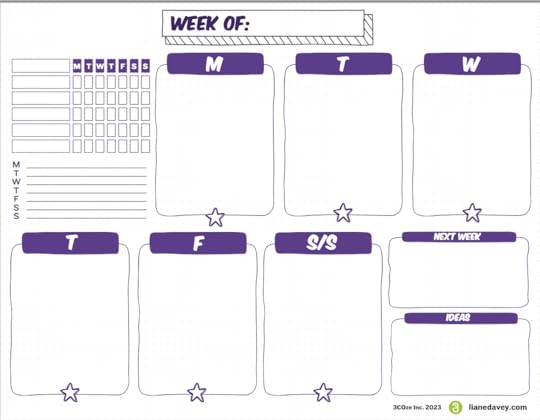
Click on the image above to download a weekly planner template. Try it for a couple of weeks and see how you like it. Here’s how to use it:
Plan AheadAt the start of your week (or on Friday afternoon or Sunday night if you like to have your ducks in a row early), get organized for the week.
Fill in Your MeetingsStart by writing in the meetings and appointments you have on each day. Use a circle or a box as the bullet point so you can check each one off once it’s complete. Include meetings and appointments from work and home to see where you have time for tasks and where you don’t.
Add Tasks Where You’ll Do ThemAs you identify tasks you must complete, write them on the day you’ll do them. Use bullet points that you can x-out when the task is complete. Be sure to consider all the meetings already in there so you don’t create an overly optimistic schedule.
Note Next Week’s HighlightsAs I plan, I also like to look ahead to next week and document any items that need preparation. This way, I have a heads-up and time to let the ideas soak in before acting on them.
Plan Your Good HabitsThis thoughtload planner template also includes a spot to plan the habits that will energize you during the week. I’ve given you five slots where you can include anything from exercise, hydration, meditation, reading, or anything else you want to include to charge your batteries. Keeping track makes a difference.
Keep UpAs the week progresses, add new meetings and tasks and cross off the ones you’ve completed.
Log IdeasWhen you have an idea that you want to pursue but not this week, add it to the ideas box so you don’t lose it. I often scribble an idea for a new YouTube video in this box and then go back and collect it when I’m preparing to record a new set.
Track Your Energy InvestmentsEach day, fill in the boxes with the energy-building habits you’ve accomplished. Did you get eight glasses of water, 10,000 steps, or 20 minutes of reading? Yes? Excellent. Fill it in to see your progress—or where you need to recommit.
Note Your MoodYour mood plays a vital role in your thoughtload. Start managing your mood by simply tracking how you feel each day. What was salient for you? This will build a practice of recognizing your emotional state, which is a key step in managing the stress and anxiety you feel.
Mark Days as CompleteMy favorite spot in my thoughtload planner is the little empty star at the bottom of each day. That’s what you fill in when each of the meetings and tasks you need to accomplish that day are complete. I love how it feels to fill in that star. And I feel relieved when I look at my planner and see days I can ignore because they’re done. So good!
Reflect AfterAnother essential part of managing your thoughtload is reflecting on the past week before planning the next one.
Move What Isn’t CompleteOf course, we live in the real world, so you probably don’t have all those stars filled in. Which meetings got deferred and need to be added to next week? What tasks were you unable to complete? Consider whether they are still required, and if so, find them home next week.
Reflect on What Needs to ChangeFinally, take the time to learn from the week. What worked? What didn’t? What charged your batteries, and what depleted them? What do you want to do differently next week?
ConclusionI’ve been using the thoughtload planner for three years now. It makes a big difference, helping me stay focused on the most critical priorities and accountable for investing in my good habits.
I know it makes a big difference because sometimes I lose discipline and stop for a couple of weeks. My stress goes up. I miss things. And I generally feel discombobulated. When I recommit to the planner, I feel my thoughtload and stress come down.
Print out a page and give it a try. Let me know what you think.
Additional ResourcesBullet Journaling for Busy Professionals
How to Handle Competing Priorities
10 Helpful Things To Do When You’re Overwhelmed
The post A Better Alternative to a To-Do List appeared first on Liane Davey.
Conflict Habit Cheat Sheet
Avoiding conflict hinders productivity and erodes trust. But introducing conflict too fast will be a shock to the system. The secret is to start by adding small but meaningful dissention to your discussions. Here’s a few techniques you can use to build a conflict habit on your team.
Build your conflict habit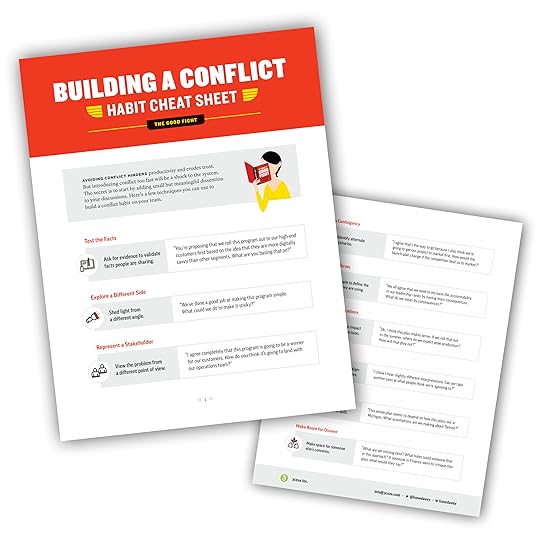 Are You In Conflict Debt? More on Conflict #pcp_wrapper-16285:not(.sps-glossary-layout) .sp-pcp-row,#pcp_wrapper-16285 .sps-glossary-items-group .sps-glossary-items-content {margin-right: -10px;margin-left: -10px;}#pcp_wrapper-16285 .sp-pcp-row [class*='sp-pcp-col-'],#pcp_wrapper-16285 .sp-pcp-row .sp-pcp-block-hierarchical{padding-right: 10px;padding-left: 10px; padding-bottom:20px;}.pcp-wrapper-16285 .sp-pcp-title a,.pcp-modal-16285 .sp-pcp-title, .pcp-wrapper-16285 .pcp-collapse-header a{text-align: left;text-transform: none;font-size: 20px;line-height: 24px;letter-spacing: 0px;color: #111;display: inherit;}.pcp-wrapper-16285 .sp-pcp-title, .pcp-modal-16285 .sp-pcp-title {margin: 0px 0px 9px 0px;}.pcp-wrapper-16285 .pcp-collapse-header a{display: inline-block;}.pcp-modal-16285 .sp-pcp-title{text-align: left;color: #111; display: block;}.pcp-wrapper-16285 .sp-pcp-title a:hover,.pcp-wrapper-16285 .pcp-collapse-header:hover a{color: #e1624b;}#pcp_wrapper-16285 .pcp-carousel-fade:not(.swiper-rtl) .swiper-slide .sp-smart-pro-item:not(:last-child), #pcp_wrapper-16285 .swiper-cube:not(.swiper-rtl) .swiper-slide [class~='sp-smart-pro-item'], #pcp_wrapper-16285 .swiper-flip:not(.swiper-rtl) .swiper-slide [class~='sp-smart-pro-item']{margin-right:20px;}#pcp_wrapper-16285 .pcp-carousel-fade.swiper-rtl .swiper-slide .sp-smart-pro-item:not(:last-child), #pcp_wrapper-16285 .swipe-cube.swiper-rtl .swiper-slide [class~='sp-smart-pro-item'], #pcp_wrapper-16285 .swiper-flip.swiper-rtl .swiper-slide [class~='sp-smart-pro-item']{margin-left:20px;}#pcp_wrapper-16285 .pcp-button-prev, #pcp_wrapper-16285 .pcp-button-next{ background-image: none; background-size: auto; background-color: #fff; font-size: 18px; height: 33px; width: 33px; margin-top: 8px; border: 1px solid #aaa; text-align: center; line-height: 30px; -webkit-transition: 0.3s; border-radius: 0px; }#pcp_wrapper-16285 .pcp-button-prev:hover, #pcp_wrapper-16285 .pcp-button-next:hover{ background-color: #D64224; border-color: #D64224; } #pcp_wrapper-16285 .pcp-button-prev i, #pcp_wrapper-16285 .pcp-button-next i{ color: #aaa; } #pcp_wrapper-16285 .pcp-button-prev:hover i, #pcp_wrapper-16285 .pcp-button-next:hover i{ color: #fff; } #pcp_wrapper-16285.pcp-carousel-wrapper .sp-pcp-post{ margin-top: 0; } #pcp_wrapper-16285 .pcp-pagination:is(.dots,.dynamic,.strokes) .swiper-pagination-bullet{ background: #cccccc; } #pcp_wrapper-16285 .pcp-pagination:is(.dots,.dynamic,.strokes) .swiper-pagination-bullet-active { background: #D64224; } #pcp_wrapper-16285 .number .swiper-pagination-bullet{ color: #ffffff; background: #444444; } #pcp_wrapper-16285 .number .swiper-pagination-bullet-active, #pcp_wrapper-16285 .number .swiper-pagination-bullet:hover{ color: #ffffff; background: #e1624b; }#pcp_wrapper-16285 .sp-pcp-carousel .pcp-pagination-scrollbar{ background: #cccccc; }#pcp_wrapper-16285 .sp-pcp-carousel .pcp-pagination-scrollbar .swiper-scrollbar-drag{ background: #D64224; }#pcp_wrapper-16285 .pcp-filter-bar ~ .sp-pcp-carousel.top_right, #pcp_wrapper-16285 .pcp-filter-bar ~ .sp-pcp-carousel.top_center, #pcp_wrapper-16285 .pcp-filter-bar ~ .sp-pcp-carousel.top_left {padding-top: 0px;}.pcp-modal-16285 .sp-pcp-post-content,.pcp-modal-16285 .sp-pcp-post-content p,.pcp-modal-16285 .sp-pcp-post-content * {color: #444;}#pcp_wrapper-16285 .sp-pcp-post ,#pcp_wrapper-16285 .sp-pcp-post td, #pcp_wrapper-16285 .table-responsive th {border: 0px solid #e2e2e2; border-radius:10px;}#pcp_wrapper-16285 .sp-pcp-post{background-color: transparent;}#pcp_wrapper-16285 .sp-pcp-post {padding: 10px 0 0 0;}#pcp_wrapper-16285 .sp-pcp-post-details {padding: 0 0 0 0;}#pcp_wrapper-16285 .sp-pcp-post .pcp-post-thumb-wrapper{margin: 0px 0px 11px 0px;}.pcp-modal-16285 .sp-pcp-post .sp-pcp-post-thumb-area {margin: 0px 0px 11px 0px;}#pcp_wrapper-16285 .sp-overlay.sp-pcp-post .pcp-post-thumb-wrapper,#pcp_wrapper-16285 .left-thumb.sp-pcp-post .pcp-post-thumb-wrapper,#pcp_wrapper-16285 .right-thumb.sp-pcp-post .pcp-post-thumb-wrapper,#pcp_wrapper-16285 .sp-pcp-content-box.sp-pcp-post .pcp-post-thumb-wrapper{margin: 0;}#pcp_wrapper-16285 .pcp-post-thumb-wrapper{border: 0px solid #dddddd;border-radius:0px;}.pcp-wrapper-16285 .sp_pcp_cf_list,.pcp-popup-16285 .sp_pcp_cf_list{text-align: left;text-transform: none;font-size: 14px;line-height: 18px;letter-spacing: 0px;color: #888;margin: 0px 0px 15px 0px;}.pcp-popup-16285 .sp_pcp_cf_list{color: #888;}.pcp-wrapper-16285 .sp-pcp-post .pcp-category a,.pcp-wrapper-16285 .sp-pcp-post .sp-pcp-post-meta ul li{margin: 0px 5px 5px 0px;}.pcp-wrapper-16285 .sp-pcp-post-meta li,.pcp-wrapper-16285 td.sp-pcp-post-meta,.pcp-wrapper-16285 .sp-pcp-post-meta ul,.pcp-wrapper-16285 .sp-pcp-post-meta li a,.pcp-popup-16285 .sp-pcp-post-meta ul,.pcp-popup-16285 .sp-pcp-post-meta li,.pcp-popup-16285 .sp-pcp-post-meta li a{text-transform: none;font-size: 14px;line-height: 16px;letter-spacing: 0px;color: #888;}.pcp-popup-16285 .sp-pcp-post-meta ul,.pcp-popup-16285 .sp-pcp-post-meta li,.pcp-popup-16285 .sp-pcp-post-meta li a {color: #888;}.pcp-modal-16285 .sp-pcp-post-meta,.pcp-wrapper-16285 .sp-pcp-post-meta{margin: 0px 0px 9px 0px;text-align: left;}.pcp-wrapper-16285 .sp-pcp-post-meta li a:hover,.pcp-popup-16285 .sp-pcp-post-meta li a:hover{color: #e1624b;}#pcp_wrapper-16285 .sp-pcp-post .sp-pcp-social-share{text-align: left;}.pcp-popup-16285 .sp-pcp-post .sp-pcp-social-share{text-align: left;}#pcp_wrapper-16285 .sp-pcp-post .sp-pcp-social-share,.pcp-popup-16285 .sp-pcp-post .sp-pcp-social-share{margin: 0px 0px 0px 0px;}.pcp-popup-16285 .sp-pcp-post .sp-pcp-social-share a.icon_only .fa,#pcp_wrapper-16285 .sp-pcp-post .sp-pcp-social-share a.icon_only .fa{background: transparent;border: none;}#pcp_wrapper-16285 .wp-block-columns {display: flex;gap: 1em;}#pcp_wrapper-16285 .wp-block-columns >.wp-block-column{flex-basis: 100%;}#pcp_wrapper-16285 .pcp-post-pagination .page-numbers.current, #pcp_wrapper-16285 .pcp-post-pagination a.active , #pcp_wrapper-16285 .pcp-post-pagination a:hover{ color: #ffffff; background-color: #e1624b; border-color: #e1624b; }#pcp_wrapper-16285 .pcp-post-pagination,#pcp_wrapper-16285 .pcp-load-more,#pcp_wrapper-16285 .pcp-infinite-scroll-loader{ text-align: left; }#pcp_wrapper-16285 .pcp-post-pagination .page-numbers, .pcp-post-pagination a{ background: #ffffff; color:#5e5e5e; border: 1px solid #bbbbbb;border-radius: 2px;}#pcp_wrapper-16285 .pcp-load-more button{ background: #ffffff; color: #5e5e5e; border: 1px solid #bbbbbb; border-radius: 2px; }#pcp_wrapper-16285 .pcp-load-more button:hover{ background: #e1624b; color: #ffffff; border: 1px solid #e1624b; cursor: pointer; }#pcp_wrapper-16285 .pcp-filter-bar .pcp-filter-by select{border: 1px solid #bbbbbb;border-radius:2px;}#pcp_wrapper-16285 .pcp-filter-bar .pcp-filter-by select:hover{border-color: #e1624b;}#pcp_wrapper-16285 .pcp_ex_filter_bar .pcp-order.pcp-bar.fl-btn input~div { background: #ffffff;color:#5e5e5e; border: 1px solid #bbbbbb;border-radius:2px;font-size: 13px;line-height: 24px;text-transform: uppercase;letter-spacing: 0px;}#pcp_wrapper-16285 .pcp_ex_filter_bar .pcp-order.pcp-bar.fl-btn input:checked~div{ color: #ffffff; background: #e1624b; border-color: #e1624b; }#pcp_wrapper-16285 .pcp_ex_filter_bar .pcp-order.pcp-bar.fl-btn input:hover~div{ color: #ffffff; background: #e1624b; border-color: #e1624b; }#pcp_wrapper-16285 .pcp_ex_filter_bar .pcp-order select{ border: 1px solid #bbbbbb;border-radius:2px;}#pcp_wrapper-16285 .pcp_ex_filter_bar .pcp-order select:hover{ border-color: #e1624b;}#pcp_wrapper-16285 .pcp_ex_filter_bar .pcp-order-by select{ border: 1px solid #bbbbbb;border-radius:2px;}#pcp_wrapper-16285 .pcp_ex_filter_bar .pcp-order-by select:hover{ border-color: #e1624b;}#pcp_wrapper-16285 .pcp-shuffle-filter .taxonomy-group{ margin: 0px 0px 30px 0px; }#pcp_wrapper-16285 .pcp-shuffle-filter .pcp-button{background: transparent;color: #444444;margin: 0px 8px 8px 0px;border: 2px solid #bbbbbb;font-size: 13px;text-transform: uppercase;letter-spacing: 0px;}#pcp_wrapper-16285 .pcp-shuffle-filter .pcp-button:hover, #pcp_wrapper-16285 .pcp-shuffle-filter .pcp-button.is-active { background: #e1624b; color: #ffffff; border: 2px solid #e1624b; } @media (max-width: 768px) {.pcp-wrapper-16285 .sp-pcp-title a{ font-size: 18px; line-height: 22px; }.pcp-wrapper-16285 .sp-pcp-post-meta li, .pcp-wrapper-16285 .sp-pcp-post-meta li a { font-size: 14px; line-height: 16px; } .pcp-wrapper-16285 .sp_pcp_cf_list{ font-size: 14px; line-height: 18px; } }@media (max-width: 420px) {.pcp-wrapper-16285 .sp-pcp-title a{ font-size: 16px; line-height: 20px; }.pcp-wrapper-16285 .sp-pcp-post-meta li, .pcp-wrapper-16285 .sp-pcp-post-meta li a{ font-size: 12px; line-height: 16px; } .pcp-wrapper-16285 .sp_pcp_cf_list{ font-size: 12px; line-height: 16px; } }#pcp_wrapper-16285 .pcp-table-layout table tbody tr.sp-pcp-post:nth-child(even) { background-color: hsl(0deg 0% 60% / 10%);}.sp-pcp-row .sp-pcp-block-6 { flex: 1 1 calc(50% );}@media (min-width: 1200px) { .sp-pcp-row .sp-pcp-col-xl-1 { flex: 1 1 100%; max-width: 100%; } .sp-pcp-row .sp-pcp-col-xl-2 { flex: 1 1 calc(50% ); max-width: calc(50% ); } .sp-pcp-row .sp-pcp-col-xl-3 { flex: 1 1 calc(33.22% ); max-width: calc(33.22% ); } .sp-pcp-row .sp-pcp-col-xl-4 { flex: 1 1 25%; max-width: 25%; } .sp-pcp-row .sp-pcp-col-xl-5 { flex: 1 1 calc(20% ); max-width: calc(20% ); } .sp-pcp-row .sp-pcp-col-xl-6 { flex: 1 1 calc(16.66% ); max-width: calc(16.66% ); } .sp-pcp-row .sp-pcp-col-xl-7 { flex: 1 1 calc(14.285% );max-width: calc(14.285% ); } .sp-pcp-row .sp-pcp-col-xl-8 { flex: 1 1 calc(12.5% );max-width: calc(12.5% ); }}@media (max-width: 1200px) { .sp-pcp-row .sp-pcp-col-lg-1 { flex: 1 1 100%; max-width: 100%; } .sp-pcp-row .sp-pcp-col-lg-2 { flex: 1 1 calc(50% );max-width: calc(50% ); } .sp-pcp-row .sp-pcp-col-lg-3 { flex: 1 1 calc(33.22% ); max-width: calc(33.22% ); } .sp-pcp-row .sp-pcp-col-lg-4 { flex: 1 1 calc(25% ); max-width: calc(25% ); } .sp-pcp-row .sp-pcp-col-lg-5 { flex: 1 1 calc(20% ); max-width: calc(20% ); } .sp-pcp-row .sp-pcp-col-lg-6 { flex: 1 1 calc(16.66% ); max-width: calc(16.66% ); } .sp-pcp-row .sp-pcp-col-lg-7 { flex: 1 1 calc(14.285% ); max-width: calc(14.285% ); } .sp-pcp-row .sp-pcp-col-lg-8 { flex: 1 1 calc(12.5% ); max-width: calc(12.5% ); }}@media (max-width: 992px) { .sp-pcp-row .sp-pcp-col-md-1 { flex: 1 1 100%; max-width: 100%; } .sp-pcp-row .sp-pcp-col-md-2 { flex: 1 1 calc(50% ); max-width: calc(50% ); } .sp-pcp-row .sp-pcp-col-md-2-5 { flex: 1 1 calc(75% ); max-width: calc(75% ); } .sp-pcp-row .sp-pcp-col-md-3 { flex: 1 1 calc(33.22% ); max-width: calc(33.22% ); } .sp-pcp-row .sp-pcp-col-md-4 { flex: 1 1 calc(25% ); max-width: 25%; } .sp-pcp-row .sp-pcp-col-md-5 { flex: 1 1 calc(20% ); max-width: calc(25% ); } .sp-pcp-row .sp-pcp-col-md-6 { flex: 1 1 calc(16.66% ); max-width: calc(16.66% ); } .sp-pcp-row .sp-pcp-col-md-7 { flex: 1 1 calc(14.285% ); max-width: calc(14.285% ); } .sp-pcp-row .sp-pcp-col-md-8 { flex: 1 1 calc(12.5% ); max-width: calc(12.5% ); }}@media (max-width: 768px) { .sp-pcp-row .sp-pcp-col-sm-1 { flex: 1 1 100%; max-width: 100%; } .sp-pcp-row .sp-pcp-col-sm-2 { flex: 1 1 calc(50% ); max-width: calc(50% ); } .sp-pcp-row .sp-pcp-col-sm-2-5 { flex: 1 1 calc(75% ); max-width: calc(75% ); } .sp-pcp-row .sp-pcp-col-sm-3 { flex: 1 1 calc(33.22% ); max-width: calc(33.22% ); } .sp-pcp-row .sp-pcp-col-sm-4 { flex: 1 1 calc(25% ); max-width: calc(25% ); } .sp-pcp-row .sp-pcp-col-sm-5 { flex: 1 1 calc(20% ); max-width: calc(20% ); } .sp-pcp-row .sp-pcp-col-sm-6 { flex: 1 1 calc(16.66% ); max-width: calc(16.66% ); } .sp-pcp-row .sp-pcp-col-sm-7 { flex: 1 1 calc(14.285% ); max-width: calc(14.285% ); } .sp-pcp-row .sp-pcp-col-sm-8 { flex: 1 1 calc(12.5% ); max-width: calc(12.5% ); }}.pcp-post-pagination.pcp-on-mobile { display: none;}@media (max-width: 576px) {.sp-pcp-row .sp-pcp-col-xs-1 { flex: 1 1 100%; max-width: 100%; } .sp-pcp-row .sp-pcp-col-xs-2 { flex: 1 1 calc(50% ); max-width: calc(50% ); } .sp-pcp-row .sp-pcp-col-xs-3 { flex: 1 1 calc(33.22% ); max-width: calc(33.22% ); } .sp-pcp-row .sp-pcp-col-xs-4 { flex: 1 1 calc(25% ); max-width: calc(25% ); } .sp-pcp-row .sp-pcp-col-xs-5 { flex: 1 1 calc(20% ); max-width: calc(20% ); } .sp-pcp-row .sp-pcp-col-xs-6 { flex: 1 1 calc(16.66% ); max-width: calc(16.66% ); } .sp-pcp-row .sp-pcp-col-xs-7 { flex: 1 1 calc(14.285% ); max-width: calc(14.285% ); } .sp-pcp-row .sp-pcp-col-xs-8 { flex: 1 1 calc(12.5% ); max-width: calc(12.5% ); } .pcp-post-pagination.pcp-on-mobile:not(.pcp-hide) { display: block; } .pcp-post-pagination:not(.pcp-on-mobile) { display: none; }}
Are You In Conflict Debt? More on Conflict #pcp_wrapper-16285:not(.sps-glossary-layout) .sp-pcp-row,#pcp_wrapper-16285 .sps-glossary-items-group .sps-glossary-items-content {margin-right: -10px;margin-left: -10px;}#pcp_wrapper-16285 .sp-pcp-row [class*='sp-pcp-col-'],#pcp_wrapper-16285 .sp-pcp-row .sp-pcp-block-hierarchical{padding-right: 10px;padding-left: 10px; padding-bottom:20px;}.pcp-wrapper-16285 .sp-pcp-title a,.pcp-modal-16285 .sp-pcp-title, .pcp-wrapper-16285 .pcp-collapse-header a{text-align: left;text-transform: none;font-size: 20px;line-height: 24px;letter-spacing: 0px;color: #111;display: inherit;}.pcp-wrapper-16285 .sp-pcp-title, .pcp-modal-16285 .sp-pcp-title {margin: 0px 0px 9px 0px;}.pcp-wrapper-16285 .pcp-collapse-header a{display: inline-block;}.pcp-modal-16285 .sp-pcp-title{text-align: left;color: #111; display: block;}.pcp-wrapper-16285 .sp-pcp-title a:hover,.pcp-wrapper-16285 .pcp-collapse-header:hover a{color: #e1624b;}#pcp_wrapper-16285 .pcp-carousel-fade:not(.swiper-rtl) .swiper-slide .sp-smart-pro-item:not(:last-child), #pcp_wrapper-16285 .swiper-cube:not(.swiper-rtl) .swiper-slide [class~='sp-smart-pro-item'], #pcp_wrapper-16285 .swiper-flip:not(.swiper-rtl) .swiper-slide [class~='sp-smart-pro-item']{margin-right:20px;}#pcp_wrapper-16285 .pcp-carousel-fade.swiper-rtl .swiper-slide .sp-smart-pro-item:not(:last-child), #pcp_wrapper-16285 .swipe-cube.swiper-rtl .swiper-slide [class~='sp-smart-pro-item'], #pcp_wrapper-16285 .swiper-flip.swiper-rtl .swiper-slide [class~='sp-smart-pro-item']{margin-left:20px;}#pcp_wrapper-16285 .pcp-button-prev, #pcp_wrapper-16285 .pcp-button-next{ background-image: none; background-size: auto; background-color: #fff; font-size: 18px; height: 33px; width: 33px; margin-top: 8px; border: 1px solid #aaa; text-align: center; line-height: 30px; -webkit-transition: 0.3s; border-radius: 0px; }#pcp_wrapper-16285 .pcp-button-prev:hover, #pcp_wrapper-16285 .pcp-button-next:hover{ background-color: #D64224; border-color: #D64224; } #pcp_wrapper-16285 .pcp-button-prev i, #pcp_wrapper-16285 .pcp-button-next i{ color: #aaa; } #pcp_wrapper-16285 .pcp-button-prev:hover i, #pcp_wrapper-16285 .pcp-button-next:hover i{ color: #fff; } #pcp_wrapper-16285.pcp-carousel-wrapper .sp-pcp-post{ margin-top: 0; } #pcp_wrapper-16285 .pcp-pagination:is(.dots,.dynamic,.strokes) .swiper-pagination-bullet{ background: #cccccc; } #pcp_wrapper-16285 .pcp-pagination:is(.dots,.dynamic,.strokes) .swiper-pagination-bullet-active { background: #D64224; } #pcp_wrapper-16285 .number .swiper-pagination-bullet{ color: #ffffff; background: #444444; } #pcp_wrapper-16285 .number .swiper-pagination-bullet-active, #pcp_wrapper-16285 .number .swiper-pagination-bullet:hover{ color: #ffffff; background: #e1624b; }#pcp_wrapper-16285 .sp-pcp-carousel .pcp-pagination-scrollbar{ background: #cccccc; }#pcp_wrapper-16285 .sp-pcp-carousel .pcp-pagination-scrollbar .swiper-scrollbar-drag{ background: #D64224; }#pcp_wrapper-16285 .pcp-filter-bar ~ .sp-pcp-carousel.top_right, #pcp_wrapper-16285 .pcp-filter-bar ~ .sp-pcp-carousel.top_center, #pcp_wrapper-16285 .pcp-filter-bar ~ .sp-pcp-carousel.top_left {padding-top: 0px;}.pcp-modal-16285 .sp-pcp-post-content,.pcp-modal-16285 .sp-pcp-post-content p,.pcp-modal-16285 .sp-pcp-post-content * {color: #444;}#pcp_wrapper-16285 .sp-pcp-post ,#pcp_wrapper-16285 .sp-pcp-post td, #pcp_wrapper-16285 .table-responsive th {border: 0px solid #e2e2e2; border-radius:10px;}#pcp_wrapper-16285 .sp-pcp-post{background-color: transparent;}#pcp_wrapper-16285 .sp-pcp-post {padding: 10px 0 0 0;}#pcp_wrapper-16285 .sp-pcp-post-details {padding: 0 0 0 0;}#pcp_wrapper-16285 .sp-pcp-post .pcp-post-thumb-wrapper{margin: 0px 0px 11px 0px;}.pcp-modal-16285 .sp-pcp-post .sp-pcp-post-thumb-area {margin: 0px 0px 11px 0px;}#pcp_wrapper-16285 .sp-overlay.sp-pcp-post .pcp-post-thumb-wrapper,#pcp_wrapper-16285 .left-thumb.sp-pcp-post .pcp-post-thumb-wrapper,#pcp_wrapper-16285 .right-thumb.sp-pcp-post .pcp-post-thumb-wrapper,#pcp_wrapper-16285 .sp-pcp-content-box.sp-pcp-post .pcp-post-thumb-wrapper{margin: 0;}#pcp_wrapper-16285 .pcp-post-thumb-wrapper{border: 0px solid #dddddd;border-radius:0px;}.pcp-wrapper-16285 .sp_pcp_cf_list,.pcp-popup-16285 .sp_pcp_cf_list{text-align: left;text-transform: none;font-size: 14px;line-height: 18px;letter-spacing: 0px;color: #888;margin: 0px 0px 15px 0px;}.pcp-popup-16285 .sp_pcp_cf_list{color: #888;}.pcp-wrapper-16285 .sp-pcp-post .pcp-category a,.pcp-wrapper-16285 .sp-pcp-post .sp-pcp-post-meta ul li{margin: 0px 5px 5px 0px;}.pcp-wrapper-16285 .sp-pcp-post-meta li,.pcp-wrapper-16285 td.sp-pcp-post-meta,.pcp-wrapper-16285 .sp-pcp-post-meta ul,.pcp-wrapper-16285 .sp-pcp-post-meta li a,.pcp-popup-16285 .sp-pcp-post-meta ul,.pcp-popup-16285 .sp-pcp-post-meta li,.pcp-popup-16285 .sp-pcp-post-meta li a{text-transform: none;font-size: 14px;line-height: 16px;letter-spacing: 0px;color: #888;}.pcp-popup-16285 .sp-pcp-post-meta ul,.pcp-popup-16285 .sp-pcp-post-meta li,.pcp-popup-16285 .sp-pcp-post-meta li a {color: #888;}.pcp-modal-16285 .sp-pcp-post-meta,.pcp-wrapper-16285 .sp-pcp-post-meta{margin: 0px 0px 9px 0px;text-align: left;}.pcp-wrapper-16285 .sp-pcp-post-meta li a:hover,.pcp-popup-16285 .sp-pcp-post-meta li a:hover{color: #e1624b;}#pcp_wrapper-16285 .sp-pcp-post .sp-pcp-social-share{text-align: left;}.pcp-popup-16285 .sp-pcp-post .sp-pcp-social-share{text-align: left;}#pcp_wrapper-16285 .sp-pcp-post .sp-pcp-social-share,.pcp-popup-16285 .sp-pcp-post .sp-pcp-social-share{margin: 0px 0px 0px 0px;}.pcp-popup-16285 .sp-pcp-post .sp-pcp-social-share a.icon_only .fa,#pcp_wrapper-16285 .sp-pcp-post .sp-pcp-social-share a.icon_only .fa{background: transparent;border: none;}#pcp_wrapper-16285 .wp-block-columns {display: flex;gap: 1em;}#pcp_wrapper-16285 .wp-block-columns >.wp-block-column{flex-basis: 100%;}#pcp_wrapper-16285 .pcp-post-pagination .page-numbers.current, #pcp_wrapper-16285 .pcp-post-pagination a.active , #pcp_wrapper-16285 .pcp-post-pagination a:hover{ color: #ffffff; background-color: #e1624b; border-color: #e1624b; }#pcp_wrapper-16285 .pcp-post-pagination,#pcp_wrapper-16285 .pcp-load-more,#pcp_wrapper-16285 .pcp-infinite-scroll-loader{ text-align: left; }#pcp_wrapper-16285 .pcp-post-pagination .page-numbers, .pcp-post-pagination a{ background: #ffffff; color:#5e5e5e; border: 1px solid #bbbbbb;border-radius: 2px;}#pcp_wrapper-16285 .pcp-load-more button{ background: #ffffff; color: #5e5e5e; border: 1px solid #bbbbbb; border-radius: 2px; }#pcp_wrapper-16285 .pcp-load-more button:hover{ background: #e1624b; color: #ffffff; border: 1px solid #e1624b; cursor: pointer; }#pcp_wrapper-16285 .pcp-filter-bar .pcp-filter-by select{border: 1px solid #bbbbbb;border-radius:2px;}#pcp_wrapper-16285 .pcp-filter-bar .pcp-filter-by select:hover{border-color: #e1624b;}#pcp_wrapper-16285 .pcp_ex_filter_bar .pcp-order.pcp-bar.fl-btn input~div { background: #ffffff;color:#5e5e5e; border: 1px solid #bbbbbb;border-radius:2px;font-size: 13px;line-height: 24px;text-transform: uppercase;letter-spacing: 0px;}#pcp_wrapper-16285 .pcp_ex_filter_bar .pcp-order.pcp-bar.fl-btn input:checked~div{ color: #ffffff; background: #e1624b; border-color: #e1624b; }#pcp_wrapper-16285 .pcp_ex_filter_bar .pcp-order.pcp-bar.fl-btn input:hover~div{ color: #ffffff; background: #e1624b; border-color: #e1624b; }#pcp_wrapper-16285 .pcp_ex_filter_bar .pcp-order select{ border: 1px solid #bbbbbb;border-radius:2px;}#pcp_wrapper-16285 .pcp_ex_filter_bar .pcp-order select:hover{ border-color: #e1624b;}#pcp_wrapper-16285 .pcp_ex_filter_bar .pcp-order-by select{ border: 1px solid #bbbbbb;border-radius:2px;}#pcp_wrapper-16285 .pcp_ex_filter_bar .pcp-order-by select:hover{ border-color: #e1624b;}#pcp_wrapper-16285 .pcp-shuffle-filter .taxonomy-group{ margin: 0px 0px 30px 0px; }#pcp_wrapper-16285 .pcp-shuffle-filter .pcp-button{background: transparent;color: #444444;margin: 0px 8px 8px 0px;border: 2px solid #bbbbbb;font-size: 13px;text-transform: uppercase;letter-spacing: 0px;}#pcp_wrapper-16285 .pcp-shuffle-filter .pcp-button:hover, #pcp_wrapper-16285 .pcp-shuffle-filter .pcp-button.is-active { background: #e1624b; color: #ffffff; border: 2px solid #e1624b; } @media (max-width: 768px) {.pcp-wrapper-16285 .sp-pcp-title a{ font-size: 18px; line-height: 22px; }.pcp-wrapper-16285 .sp-pcp-post-meta li, .pcp-wrapper-16285 .sp-pcp-post-meta li a { font-size: 14px; line-height: 16px; } .pcp-wrapper-16285 .sp_pcp_cf_list{ font-size: 14px; line-height: 18px; } }@media (max-width: 420px) {.pcp-wrapper-16285 .sp-pcp-title a{ font-size: 16px; line-height: 20px; }.pcp-wrapper-16285 .sp-pcp-post-meta li, .pcp-wrapper-16285 .sp-pcp-post-meta li a{ font-size: 12px; line-height: 16px; } .pcp-wrapper-16285 .sp_pcp_cf_list{ font-size: 12px; line-height: 16px; } }#pcp_wrapper-16285 .pcp-table-layout table tbody tr.sp-pcp-post:nth-child(even) { background-color: hsl(0deg 0% 60% / 10%);}.sp-pcp-row .sp-pcp-block-6 { flex: 1 1 calc(50% );}@media (min-width: 1200px) { .sp-pcp-row .sp-pcp-col-xl-1 { flex: 1 1 100%; max-width: 100%; } .sp-pcp-row .sp-pcp-col-xl-2 { flex: 1 1 calc(50% ); max-width: calc(50% ); } .sp-pcp-row .sp-pcp-col-xl-3 { flex: 1 1 calc(33.22% ); max-width: calc(33.22% ); } .sp-pcp-row .sp-pcp-col-xl-4 { flex: 1 1 25%; max-width: 25%; } .sp-pcp-row .sp-pcp-col-xl-5 { flex: 1 1 calc(20% ); max-width: calc(20% ); } .sp-pcp-row .sp-pcp-col-xl-6 { flex: 1 1 calc(16.66% ); max-width: calc(16.66% ); } .sp-pcp-row .sp-pcp-col-xl-7 { flex: 1 1 calc(14.285% );max-width: calc(14.285% ); } .sp-pcp-row .sp-pcp-col-xl-8 { flex: 1 1 calc(12.5% );max-width: calc(12.5% ); }}@media (max-width: 1200px) { .sp-pcp-row .sp-pcp-col-lg-1 { flex: 1 1 100%; max-width: 100%; } .sp-pcp-row .sp-pcp-col-lg-2 { flex: 1 1 calc(50% );max-width: calc(50% ); } .sp-pcp-row .sp-pcp-col-lg-3 { flex: 1 1 calc(33.22% ); max-width: calc(33.22% ); } .sp-pcp-row .sp-pcp-col-lg-4 { flex: 1 1 calc(25% ); max-width: calc(25% ); } .sp-pcp-row .sp-pcp-col-lg-5 { flex: 1 1 calc(20% ); max-width: calc(20% ); } .sp-pcp-row .sp-pcp-col-lg-6 { flex: 1 1 calc(16.66% ); max-width: calc(16.66% ); } .sp-pcp-row .sp-pcp-col-lg-7 { flex: 1 1 calc(14.285% ); max-width: calc(14.285% ); } .sp-pcp-row .sp-pcp-col-lg-8 { flex: 1 1 calc(12.5% ); max-width: calc(12.5% ); }}@media (max-width: 992px) { .sp-pcp-row .sp-pcp-col-md-1 { flex: 1 1 100%; max-width: 100%; } .sp-pcp-row .sp-pcp-col-md-2 { flex: 1 1 calc(50% ); max-width: calc(50% ); } .sp-pcp-row .sp-pcp-col-md-2-5 { flex: 1 1 calc(75% ); max-width: calc(75% ); } .sp-pcp-row .sp-pcp-col-md-3 { flex: 1 1 calc(33.22% ); max-width: calc(33.22% ); } .sp-pcp-row .sp-pcp-col-md-4 { flex: 1 1 calc(25% ); max-width: 25%; } .sp-pcp-row .sp-pcp-col-md-5 { flex: 1 1 calc(20% ); max-width: calc(25% ); } .sp-pcp-row .sp-pcp-col-md-6 { flex: 1 1 calc(16.66% ); max-width: calc(16.66% ); } .sp-pcp-row .sp-pcp-col-md-7 { flex: 1 1 calc(14.285% ); max-width: calc(14.285% ); } .sp-pcp-row .sp-pcp-col-md-8 { flex: 1 1 calc(12.5% ); max-width: calc(12.5% ); }}@media (max-width: 768px) { .sp-pcp-row .sp-pcp-col-sm-1 { flex: 1 1 100%; max-width: 100%; } .sp-pcp-row .sp-pcp-col-sm-2 { flex: 1 1 calc(50% ); max-width: calc(50% ); } .sp-pcp-row .sp-pcp-col-sm-2-5 { flex: 1 1 calc(75% ); max-width: calc(75% ); } .sp-pcp-row .sp-pcp-col-sm-3 { flex: 1 1 calc(33.22% ); max-width: calc(33.22% ); } .sp-pcp-row .sp-pcp-col-sm-4 { flex: 1 1 calc(25% ); max-width: calc(25% ); } .sp-pcp-row .sp-pcp-col-sm-5 { flex: 1 1 calc(20% ); max-width: calc(20% ); } .sp-pcp-row .sp-pcp-col-sm-6 { flex: 1 1 calc(16.66% ); max-width: calc(16.66% ); } .sp-pcp-row .sp-pcp-col-sm-7 { flex: 1 1 calc(14.285% ); max-width: calc(14.285% ); } .sp-pcp-row .sp-pcp-col-sm-8 { flex: 1 1 calc(12.5% ); max-width: calc(12.5% ); }}.pcp-post-pagination.pcp-on-mobile { display: none;}@media (max-width: 576px) {.sp-pcp-row .sp-pcp-col-xs-1 { flex: 1 1 100%; max-width: 100%; } .sp-pcp-row .sp-pcp-col-xs-2 { flex: 1 1 calc(50% ); max-width: calc(50% ); } .sp-pcp-row .sp-pcp-col-xs-3 { flex: 1 1 calc(33.22% ); max-width: calc(33.22% ); } .sp-pcp-row .sp-pcp-col-xs-4 { flex: 1 1 calc(25% ); max-width: calc(25% ); } .sp-pcp-row .sp-pcp-col-xs-5 { flex: 1 1 calc(20% ); max-width: calc(20% ); } .sp-pcp-row .sp-pcp-col-xs-6 { flex: 1 1 calc(16.66% ); max-width: calc(16.66% ); } .sp-pcp-row .sp-pcp-col-xs-7 { flex: 1 1 calc(14.285% ); max-width: calc(14.285% ); } .sp-pcp-row .sp-pcp-col-xs-8 { flex: 1 1 calc(12.5% ); max-width: calc(12.5% ); } .pcp-post-pagination.pcp-on-mobile:not(.pcp-hide) { display: block; } .pcp-post-pagination:not(.pcp-on-mobile) { display: none; }}
 The Problem with Agreeing to Disagree
The Problem with Agreeing to Disagree
 How to End a Business Relationship
How to End a Business Relationship
 Good and Bad Apologies
Good and Bad Apologies
 Passing on Feedback for Someone Else
Passing on Feedback for Someone Else
 Productive Versus Unproductive Conflict Resolution
Productive Versus Unproductive Conflict Resolution
 Dos and Don’ts When an Employee Doesn’t Like You
Dos and Don’ts When an Employee Doesn’t Like You
 Tension is a good thing
Tension is a good thing
 How to deal with passive aggressive people
How to deal with passive aggressive people
 Reducing Conflict Fatigue
Reducing Conflict Fatigue
 What to Do When Your Boss Won’t Take No for an Answer
What to Do When Your Boss Won’t Take No for an Answer
 What to Do if You Witness Colleagues Fighting
What to Do if You Witness Colleagues Fighting
 Optimists, Skeptics, and Cynics
Optimists, Skeptics, and Cynics
 Your Value is in Identifying the Problem, Not Solving It
Your Value is in Identifying the Problem, Not Solving It
 Should you pick your battles? – Part II
Should you pick your battles? – Part II
 How to Broach an Uncomfortable Topic
How to Broach an Uncomfortable Topic
 4 secrets of avoiding the conflict spiral
4 secrets of avoiding the conflict spiral
 Why you should stop pushing back
Why you should stop pushing back
 The Steps to Resolve a Conflict at Work
The Steps to Resolve a Conflict at Work
 How do you deal with someone who is always negative about change?
How do you deal with someone who is always negative about change?
 The Importance of Conflict Resolution at Work
The Importance of Conflict Resolution at Work
 Exercise: Fostering a Culture of Productive Conflict
Exercise: Fostering a Culture of Productive Conflict
 Facts Don’t Solve Fights
Facts Don’t Solve Fights
 10 Ways to Help People Say Uncomfortable Things
10 Ways to Help People Say Uncomfortable Things
 Conflict Debt
Conflict Debt
 How to Tell if Your Work Conflict is Healthy
How to Tell if Your Work Conflict is Healthy
 Are Your Teammates Too Sensitive?
Are Your Teammates Too Sensitive?
 When conflict gets emotional
When conflict gets emotional
 New Research on Healthy Conflict
New Research on Healthy Conflict
 How to Have an Uncomfortable Conversation Remotely
How to Have an Uncomfortable Conversation Remotely
 Why Are People So Passive-Aggressive?
Why Are People So Passive-Aggressive?
 How to Stop Being Passive-Aggressive
How to Stop Being Passive-Aggressive
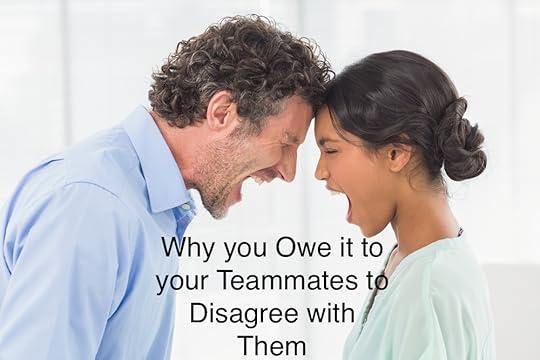 Why you owe it to your teammates to disagree with them
Why you owe it to your teammates to disagree with them
 The Right Words: The Two Truths
The Right Words: The Two Truths
 How to (inadvertently) start a fight
How to (inadvertently) start a fight
 How to Address a Passive-Aggressive Colleague
How to Address a Passive-Aggressive Colleague
 4 alternatives to throwing your teammate under the bus
4 alternatives to throwing your teammate under the bus
 Managing the Aggressor on Your Team
Managing the Aggressor on Your Team
 What to Say to Prevent Passive-aggressiveness
What to Say to Prevent Passive-aggressiveness
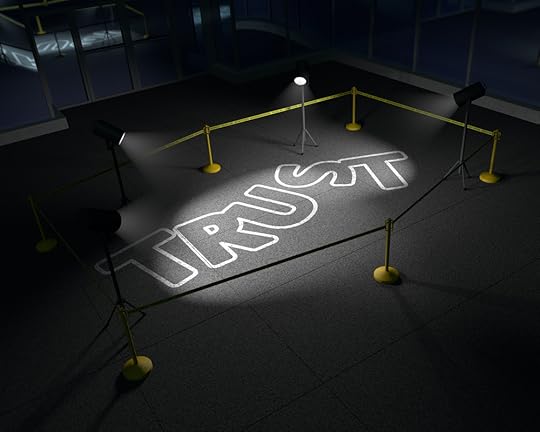 5 practices that bolster trust on your team
5 practices that bolster trust on your team
 The Vicious Cycle of Bad Behavior
The Vicious Cycle of Bad Behavior
 How to Manage Conflict in Virtual Teams
How to Manage Conflict in Virtual Teams
 Adam Grant versus Brené Brown: Two Truths are Better than One
Adam Grant versus Brené Brown: Two Truths are Better than One
 Getting Your Team Unstuck
Getting Your Team Unstuck
 Should I risk making someone emotional?
Should I risk making someone emotional?
 Recognizing Superpowers
Recognizing Superpowers
 Standing up to powerful bullies
Standing up to powerful bullies
 How to work with emotional data
How to work with emotional data
 Is it Manipulative to Use Productive Conflict Techniques?
Is it Manipulative to Use Productive Conflict Techniques?
 I beg (you) to differ
I beg (you) to differ
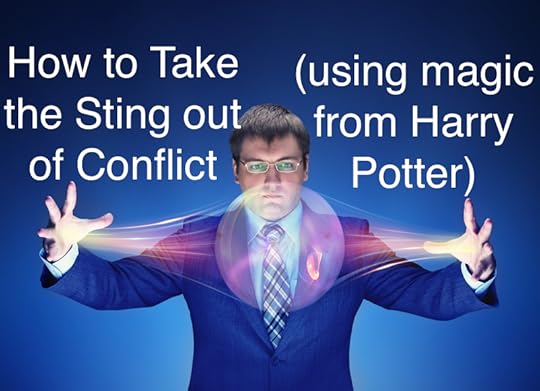 How to take the sting out of conflict (using magic from Harry Potter)
How to take the sting out of conflict (using magic from Harry Potter)
 Disagree with your boss without getting fired
Disagree with your boss without getting fired
 Should I be honest with my colleagues?
Should I be honest with my colleagues?
 Do one uncomfortable thing
Do one uncomfortable thing
 The First Steps to Create a Productive Conflict Habit
The First Steps to Create a Productive Conflict Habit
 How to tone down an argument
How to tone down an argument
 The Case for More Conflict
The Case for More Conflict
 9 Easy Ways to Improve Decision Making on Your Team
9 Easy Ways to Improve Decision Making on Your Team
 How quickly do you trust?
How quickly do you trust?
 When discussions get heated
When discussions get heated
 Don’t pass conflict aversion to the next generation
Don’t pass conflict aversion to the next generation
 5 Ways to make your team more decisive
5 Ways to make your team more decisive
 Held Hostage by the Crier on the Team
Held Hostage by the Crier on the Team
 Bad Advice: Why You Shouldn’t Come with a Solution
Bad Advice: Why You Shouldn’t Come with a Solution
 Trust can’t come at the expense of diversity
Trust can’t come at the expense of diversity
 Can Conflict be Nice?
Can Conflict be Nice?
 Struggling to fit in on a new team
Struggling to fit in on a new team
 Managing underground conflict
Managing underground conflict
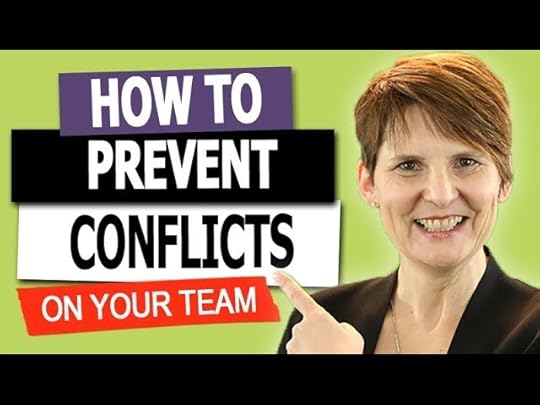 How to Avoid an Argument
How to Avoid an Argument
 Why You Can’t Say No at Work
Why You Can’t Say No at Work
 Should I get involved?
Should I get involved?
 The #1 Crisis Facing Organizations: The Need for More Conflict
The #1 Crisis Facing Organizations: The Need for More Conflict
 Doing an end run
Doing an end run
 Your conflict defaults
Your conflict defaults
 Should you pick your battles? – Part I
Should you pick your battles? – Part I
 Is your team conflict avoidant?
Is your team conflict avoidant?
 3 Benefits of dealing with emotions on your team
3 Benefits of dealing with emotions on your team
 What stresses you out?
What stresses you out?
 Should you mind your own business?
Should you mind your own business?
 Prevent resistance before it starts
Prevent resistance before it starts
 Talent management shenanigans
Talent management shenanigans
 Grievance with a teammate
Grievance with a teammate
 Conflict Debt Assessment
Conflict Debt Assessment
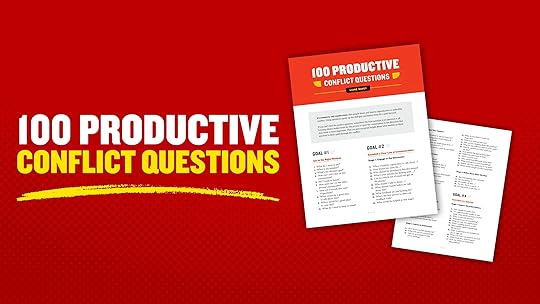 100 Conflict Questions
100 Conflict Questions
 A Game Plan for That Conversation You’ve Been Putting Off
A Game Plan for That Conversation You’ve Been Putting Off
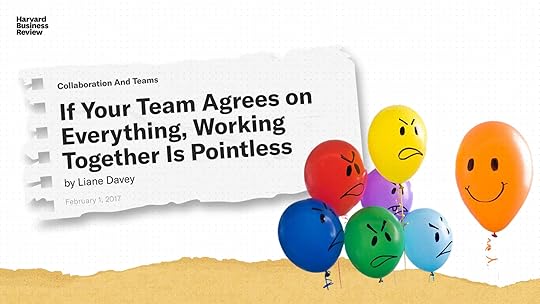 If Your Team Agrees on Everything, Working Together Is Pointless
If Your Team Agrees on Everything, Working Together Is Pointless
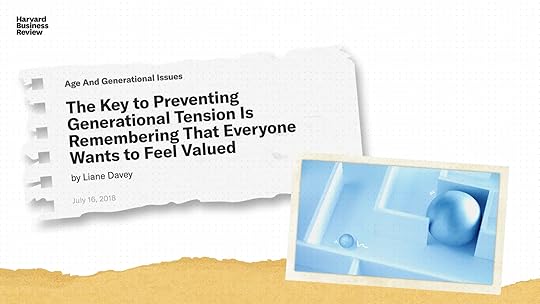 The Key to Preventing Generational Tension Is Remembering That Everyone Wants to Feel Valued
The Key to Preventing Generational Tension Is Remembering That Everyone Wants to Feel Valued
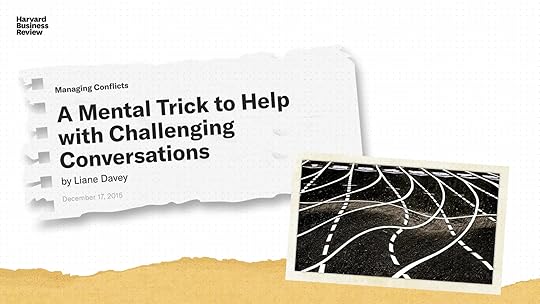 A Mental Trick to Help with Challenging Conversations
A Mental Trick to Help with Challenging Conversations
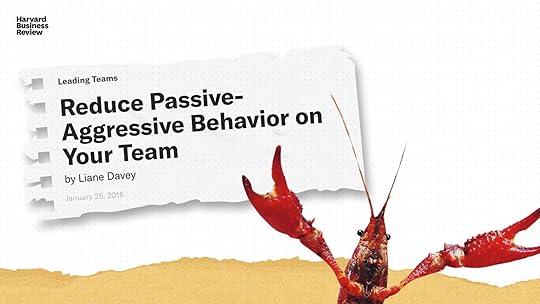 Reduce Passive-Aggressive Behavior on Your Team
Reduce Passive-Aggressive Behavior on Your Team
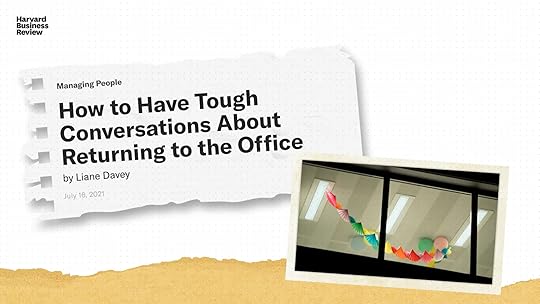 How to Have Tough Conversations About Returning to the Office
How to Have Tough Conversations About Returning to the Office
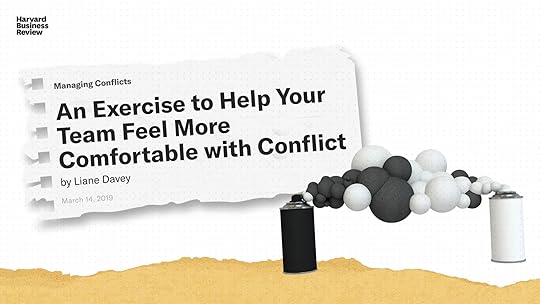 An Exercise to Help Your Team Feel More Comfortable with Conflict
An Exercise to Help Your Team Feel More Comfortable with Conflict
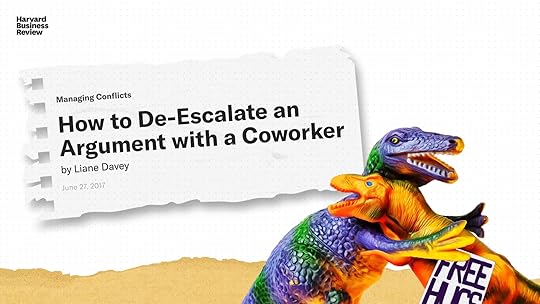 How to De-Escalate an Argument with a Coworker
How to De-Escalate an Argument with a Coworker
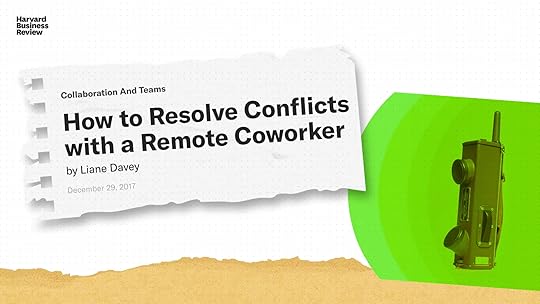 How to Resolve Conflicts with a Remote Coworker
How to Resolve Conflicts with a Remote Coworker
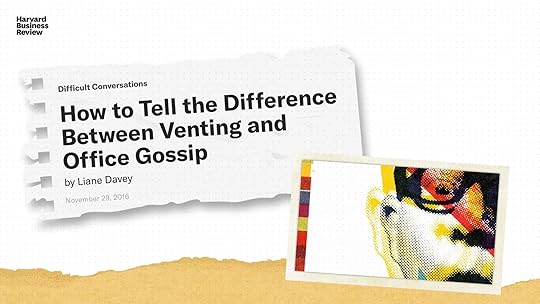 How to Tell the Difference Between Venting and Office Gossip
How to Tell the Difference Between Venting and Office Gossip
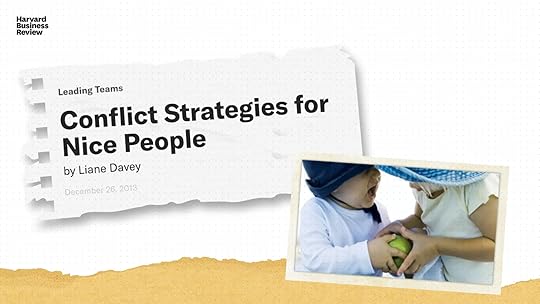 Conflict Strategies for Nice People
Conflict Strategies for Nice People
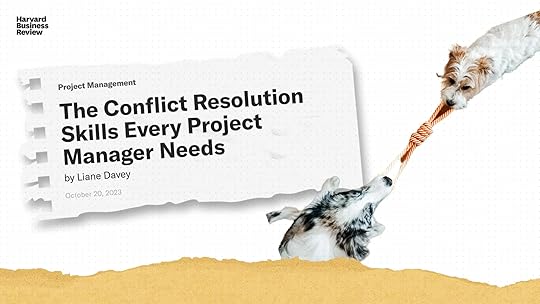 The Conflict Resolution Skills Every Project Manager Needs
The Conflict Resolution Skills Every Project Manager Needs
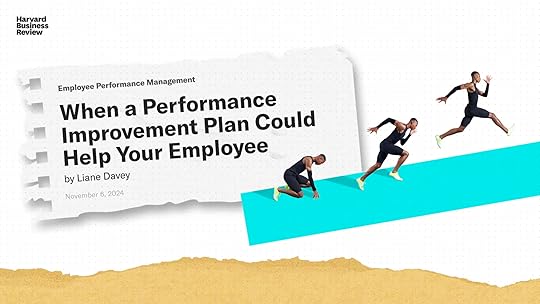 How to Motivate Someone You Don’t Like
How to Motivate Someone You Don’t Like
 When an Argument Gets Too Heated, Here’s What to Say
When an Argument Gets Too Heated, Here’s What to Say
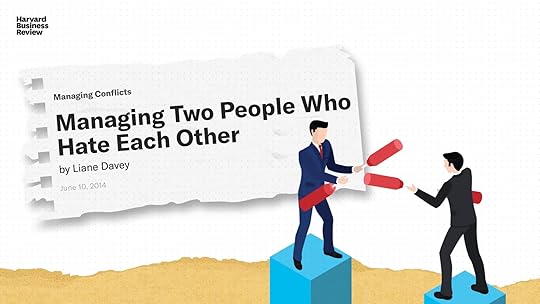 Managing Two People Who Hate Each Other
Managing Two People Who Hate Each Other
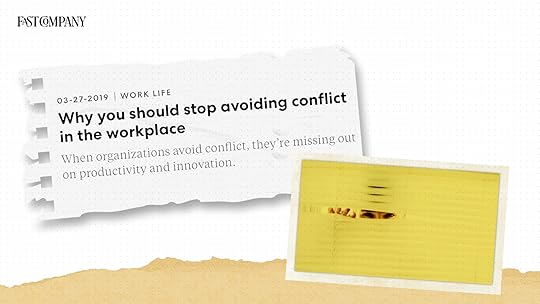 Why you should stop avoiding conflict in the workplace
Why you should stop avoiding conflict in the workplace
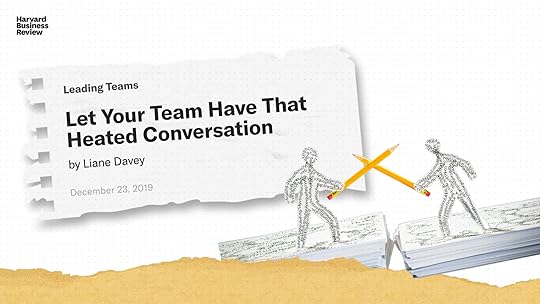 Let Your Team Have That Heated Conversation
Let Your Team Have That Heated Conversation The post Conflict Habit Cheat Sheet appeared first on Liane Davey.
100 Conflict Questions
Statements and assertions shut people down and lead to unproductive or unhealthy conflict. Using questions opens up the dialogue and leaves room for a path forward.
Find the right words to say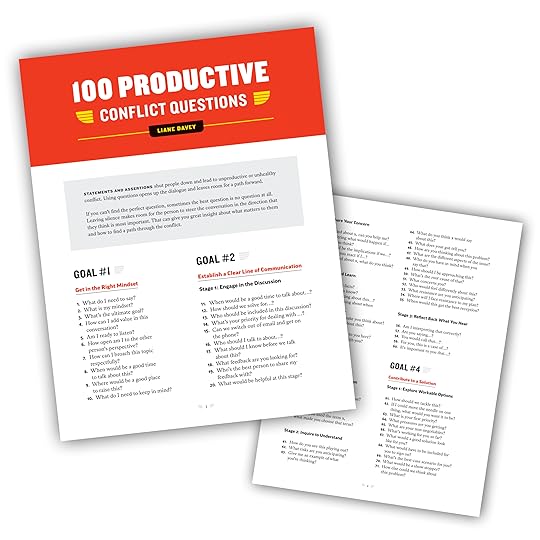 Are You In Conflict Debt? More on Conflict #pcp_wrapper-16285:not(.sps-glossary-layout) .sp-pcp-row,#pcp_wrapper-16285 .sps-glossary-items-group .sps-glossary-items-content {margin-right: -10px;margin-left: -10px;}#pcp_wrapper-16285 .sp-pcp-row [class*='sp-pcp-col-'],#pcp_wrapper-16285 .sp-pcp-row .sp-pcp-block-hierarchical{padding-right: 10px;padding-left: 10px; padding-bottom:20px;}.pcp-wrapper-16285 .sp-pcp-title a,.pcp-modal-16285 .sp-pcp-title, .pcp-wrapper-16285 .pcp-collapse-header a{text-align: left;text-transform: none;font-size: 20px;line-height: 24px;letter-spacing: 0px;color: #111;display: inherit;}.pcp-wrapper-16285 .sp-pcp-title, .pcp-modal-16285 .sp-pcp-title {margin: 0px 0px 9px 0px;}.pcp-wrapper-16285 .pcp-collapse-header a{display: inline-block;}.pcp-modal-16285 .sp-pcp-title{text-align: left;color: #111; display: block;}.pcp-wrapper-16285 .sp-pcp-title a:hover,.pcp-wrapper-16285 .pcp-collapse-header:hover a{color: #e1624b;}#pcp_wrapper-16285 .pcp-carousel-fade:not(.swiper-rtl) .swiper-slide .sp-smart-pro-item:not(:last-child), #pcp_wrapper-16285 .swiper-cube:not(.swiper-rtl) .swiper-slide [class~='sp-smart-pro-item'], #pcp_wrapper-16285 .swiper-flip:not(.swiper-rtl) .swiper-slide [class~='sp-smart-pro-item']{margin-right:20px;}#pcp_wrapper-16285 .pcp-carousel-fade.swiper-rtl .swiper-slide .sp-smart-pro-item:not(:last-child), #pcp_wrapper-16285 .swipe-cube.swiper-rtl .swiper-slide [class~='sp-smart-pro-item'], #pcp_wrapper-16285 .swiper-flip.swiper-rtl .swiper-slide [class~='sp-smart-pro-item']{margin-left:20px;}#pcp_wrapper-16285 .pcp-button-prev, #pcp_wrapper-16285 .pcp-button-next{ background-image: none; background-size: auto; background-color: #fff; font-size: 18px; height: 33px; width: 33px; margin-top: 8px; border: 1px solid #aaa; text-align: center; line-height: 30px; -webkit-transition: 0.3s; border-radius: 0px; }#pcp_wrapper-16285 .pcp-button-prev:hover, #pcp_wrapper-16285 .pcp-button-next:hover{ background-color: #D64224; border-color: #D64224; } #pcp_wrapper-16285 .pcp-button-prev i, #pcp_wrapper-16285 .pcp-button-next i{ color: #aaa; } #pcp_wrapper-16285 .pcp-button-prev:hover i, #pcp_wrapper-16285 .pcp-button-next:hover i{ color: #fff; } #pcp_wrapper-16285.pcp-carousel-wrapper .sp-pcp-post{ margin-top: 0; } #pcp_wrapper-16285 .pcp-pagination:is(.dots,.dynamic,.strokes) .swiper-pagination-bullet{ background: #cccccc; } #pcp_wrapper-16285 .pcp-pagination:is(.dots,.dynamic,.strokes) .swiper-pagination-bullet-active { background: #D64224; } #pcp_wrapper-16285 .number .swiper-pagination-bullet{ color: #ffffff; background: #444444; } #pcp_wrapper-16285 .number .swiper-pagination-bullet-active, #pcp_wrapper-16285 .number .swiper-pagination-bullet:hover{ color: #ffffff; background: #e1624b; }#pcp_wrapper-16285 .sp-pcp-carousel .pcp-pagination-scrollbar{ background: #cccccc; }#pcp_wrapper-16285 .sp-pcp-carousel .pcp-pagination-scrollbar .swiper-scrollbar-drag{ background: #D64224; }#pcp_wrapper-16285 .pcp-filter-bar ~ .sp-pcp-carousel.top_right, #pcp_wrapper-16285 .pcp-filter-bar ~ .sp-pcp-carousel.top_center, #pcp_wrapper-16285 .pcp-filter-bar ~ .sp-pcp-carousel.top_left {padding-top: 0px;}.pcp-modal-16285 .sp-pcp-post-content,.pcp-modal-16285 .sp-pcp-post-content p,.pcp-modal-16285 .sp-pcp-post-content * {color: #444;}#pcp_wrapper-16285 .sp-pcp-post ,#pcp_wrapper-16285 .sp-pcp-post td, #pcp_wrapper-16285 .table-responsive th {border: 0px solid #e2e2e2; border-radius:10px;}#pcp_wrapper-16285 .sp-pcp-post{background-color: transparent;}#pcp_wrapper-16285 .sp-pcp-post {padding: 10px 0 0 0;}#pcp_wrapper-16285 .sp-pcp-post-details {padding: 0 0 0 0;}#pcp_wrapper-16285 .sp-pcp-post .pcp-post-thumb-wrapper{margin: 0px 0px 11px 0px;}.pcp-modal-16285 .sp-pcp-post .sp-pcp-post-thumb-area {margin: 0px 0px 11px 0px;}#pcp_wrapper-16285 .sp-overlay.sp-pcp-post .pcp-post-thumb-wrapper,#pcp_wrapper-16285 .left-thumb.sp-pcp-post .pcp-post-thumb-wrapper,#pcp_wrapper-16285 .right-thumb.sp-pcp-post .pcp-post-thumb-wrapper,#pcp_wrapper-16285 .sp-pcp-content-box.sp-pcp-post .pcp-post-thumb-wrapper{margin: 0;}#pcp_wrapper-16285 .pcp-post-thumb-wrapper{border: 0px solid #dddddd;border-radius:0px;}.pcp-wrapper-16285 .sp_pcp_cf_list,.pcp-popup-16285 .sp_pcp_cf_list{text-align: left;text-transform: none;font-size: 14px;line-height: 18px;letter-spacing: 0px;color: #888;margin: 0px 0px 15px 0px;}.pcp-popup-16285 .sp_pcp_cf_list{color: #888;}.pcp-wrapper-16285 .sp-pcp-post .pcp-category a,.pcp-wrapper-16285 .sp-pcp-post .sp-pcp-post-meta ul li{margin: 0px 5px 5px 0px;}.pcp-wrapper-16285 .sp-pcp-post-meta li,.pcp-wrapper-16285 td.sp-pcp-post-meta,.pcp-wrapper-16285 .sp-pcp-post-meta ul,.pcp-wrapper-16285 .sp-pcp-post-meta li a,.pcp-popup-16285 .sp-pcp-post-meta ul,.pcp-popup-16285 .sp-pcp-post-meta li,.pcp-popup-16285 .sp-pcp-post-meta li a{text-transform: none;font-size: 14px;line-height: 16px;letter-spacing: 0px;color: #888;}.pcp-popup-16285 .sp-pcp-post-meta ul,.pcp-popup-16285 .sp-pcp-post-meta li,.pcp-popup-16285 .sp-pcp-post-meta li a {color: #888;}.pcp-modal-16285 .sp-pcp-post-meta,.pcp-wrapper-16285 .sp-pcp-post-meta{margin: 0px 0px 9px 0px;text-align: left;}.pcp-wrapper-16285 .sp-pcp-post-meta li a:hover,.pcp-popup-16285 .sp-pcp-post-meta li a:hover{color: #e1624b;}#pcp_wrapper-16285 .sp-pcp-post .sp-pcp-social-share{text-align: left;}.pcp-popup-16285 .sp-pcp-post .sp-pcp-social-share{text-align: left;}#pcp_wrapper-16285 .sp-pcp-post .sp-pcp-social-share,.pcp-popup-16285 .sp-pcp-post .sp-pcp-social-share{margin: 0px 0px 0px 0px;}.pcp-popup-16285 .sp-pcp-post .sp-pcp-social-share a.icon_only .fa,#pcp_wrapper-16285 .sp-pcp-post .sp-pcp-social-share a.icon_only .fa{background: transparent;border: none;}#pcp_wrapper-16285 .wp-block-columns {display: flex;gap: 1em;}#pcp_wrapper-16285 .wp-block-columns >.wp-block-column{flex-basis: 100%;}#pcp_wrapper-16285 .pcp-post-pagination .page-numbers.current, #pcp_wrapper-16285 .pcp-post-pagination a.active , #pcp_wrapper-16285 .pcp-post-pagination a:hover{ color: #ffffff; background-color: #e1624b; border-color: #e1624b; }#pcp_wrapper-16285 .pcp-post-pagination,#pcp_wrapper-16285 .pcp-load-more,#pcp_wrapper-16285 .pcp-infinite-scroll-loader{ text-align: left; }#pcp_wrapper-16285 .pcp-post-pagination .page-numbers, .pcp-post-pagination a{ background: #ffffff; color:#5e5e5e; border: 1px solid #bbbbbb;border-radius: 2px;}#pcp_wrapper-16285 .pcp-load-more button{ background: #ffffff; color: #5e5e5e; border: 1px solid #bbbbbb; border-radius: 2px; }#pcp_wrapper-16285 .pcp-load-more button:hover{ background: #e1624b; color: #ffffff; border: 1px solid #e1624b; cursor: pointer; }#pcp_wrapper-16285 .pcp-filter-bar .pcp-filter-by select{border: 1px solid #bbbbbb;border-radius:2px;}#pcp_wrapper-16285 .pcp-filter-bar .pcp-filter-by select:hover{border-color: #e1624b;}#pcp_wrapper-16285 .pcp_ex_filter_bar .pcp-order.pcp-bar.fl-btn input~div { background: #ffffff;color:#5e5e5e; border: 1px solid #bbbbbb;border-radius:2px;font-size: 13px;line-height: 24px;text-transform: uppercase;letter-spacing: 0px;}#pcp_wrapper-16285 .pcp_ex_filter_bar .pcp-order.pcp-bar.fl-btn input:checked~div{ color: #ffffff; background: #e1624b; border-color: #e1624b; }#pcp_wrapper-16285 .pcp_ex_filter_bar .pcp-order.pcp-bar.fl-btn input:hover~div{ color: #ffffff; background: #e1624b; border-color: #e1624b; }#pcp_wrapper-16285 .pcp_ex_filter_bar .pcp-order select{ border: 1px solid #bbbbbb;border-radius:2px;}#pcp_wrapper-16285 .pcp_ex_filter_bar .pcp-order select:hover{ border-color: #e1624b;}#pcp_wrapper-16285 .pcp_ex_filter_bar .pcp-order-by select{ border: 1px solid #bbbbbb;border-radius:2px;}#pcp_wrapper-16285 .pcp_ex_filter_bar .pcp-order-by select:hover{ border-color: #e1624b;}#pcp_wrapper-16285 .pcp-shuffle-filter .taxonomy-group{ margin: 0px 0px 30px 0px; }#pcp_wrapper-16285 .pcp-shuffle-filter .pcp-button{background: transparent;color: #444444;margin: 0px 8px 8px 0px;border: 2px solid #bbbbbb;font-size: 13px;text-transform: uppercase;letter-spacing: 0px;}#pcp_wrapper-16285 .pcp-shuffle-filter .pcp-button:hover, #pcp_wrapper-16285 .pcp-shuffle-filter .pcp-button.is-active { background: #e1624b; color: #ffffff; border: 2px solid #e1624b; } @media (max-width: 768px) {.pcp-wrapper-16285 .sp-pcp-title a{ font-size: 18px; line-height: 22px; }.pcp-wrapper-16285 .sp-pcp-post-meta li, .pcp-wrapper-16285 .sp-pcp-post-meta li a { font-size: 14px; line-height: 16px; } .pcp-wrapper-16285 .sp_pcp_cf_list{ font-size: 14px; line-height: 18px; } }@media (max-width: 420px) {.pcp-wrapper-16285 .sp-pcp-title a{ font-size: 16px; line-height: 20px; }.pcp-wrapper-16285 .sp-pcp-post-meta li, .pcp-wrapper-16285 .sp-pcp-post-meta li a{ font-size: 12px; line-height: 16px; } .pcp-wrapper-16285 .sp_pcp_cf_list{ font-size: 12px; line-height: 16px; } }#pcp_wrapper-16285 .pcp-table-layout table tbody tr.sp-pcp-post:nth-child(even) { background-color: hsl(0deg 0% 60% / 10%);}.sp-pcp-row .sp-pcp-block-6 { flex: 1 1 calc(50% );}@media (min-width: 1200px) { .sp-pcp-row .sp-pcp-col-xl-1 { flex: 1 1 100%; max-width: 100%; } .sp-pcp-row .sp-pcp-col-xl-2 { flex: 1 1 calc(50% ); max-width: calc(50% ); } .sp-pcp-row .sp-pcp-col-xl-3 { flex: 1 1 calc(33.22% ); max-width: calc(33.22% ); } .sp-pcp-row .sp-pcp-col-xl-4 { flex: 1 1 25%; max-width: 25%; } .sp-pcp-row .sp-pcp-col-xl-5 { flex: 1 1 calc(20% ); max-width: calc(20% ); } .sp-pcp-row .sp-pcp-col-xl-6 { flex: 1 1 calc(16.66% ); max-width: calc(16.66% ); } .sp-pcp-row .sp-pcp-col-xl-7 { flex: 1 1 calc(14.285% );max-width: calc(14.285% ); } .sp-pcp-row .sp-pcp-col-xl-8 { flex: 1 1 calc(12.5% );max-width: calc(12.5% ); }}@media (max-width: 1200px) { .sp-pcp-row .sp-pcp-col-lg-1 { flex: 1 1 100%; max-width: 100%; } .sp-pcp-row .sp-pcp-col-lg-2 { flex: 1 1 calc(50% );max-width: calc(50% ); } .sp-pcp-row .sp-pcp-col-lg-3 { flex: 1 1 calc(33.22% ); max-width: calc(33.22% ); } .sp-pcp-row .sp-pcp-col-lg-4 { flex: 1 1 calc(25% ); max-width: calc(25% ); } .sp-pcp-row .sp-pcp-col-lg-5 { flex: 1 1 calc(20% ); max-width: calc(20% ); } .sp-pcp-row .sp-pcp-col-lg-6 { flex: 1 1 calc(16.66% ); max-width: calc(16.66% ); } .sp-pcp-row .sp-pcp-col-lg-7 { flex: 1 1 calc(14.285% ); max-width: calc(14.285% ); } .sp-pcp-row .sp-pcp-col-lg-8 { flex: 1 1 calc(12.5% ); max-width: calc(12.5% ); }}@media (max-width: 992px) { .sp-pcp-row .sp-pcp-col-md-1 { flex: 1 1 100%; max-width: 100%; } .sp-pcp-row .sp-pcp-col-md-2 { flex: 1 1 calc(50% ); max-width: calc(50% ); } .sp-pcp-row .sp-pcp-col-md-2-5 { flex: 1 1 calc(75% ); max-width: calc(75% ); } .sp-pcp-row .sp-pcp-col-md-3 { flex: 1 1 calc(33.22% ); max-width: calc(33.22% ); } .sp-pcp-row .sp-pcp-col-md-4 { flex: 1 1 calc(25% ); max-width: 25%; } .sp-pcp-row .sp-pcp-col-md-5 { flex: 1 1 calc(20% ); max-width: calc(25% ); } .sp-pcp-row .sp-pcp-col-md-6 { flex: 1 1 calc(16.66% ); max-width: calc(16.66% ); } .sp-pcp-row .sp-pcp-col-md-7 { flex: 1 1 calc(14.285% ); max-width: calc(14.285% ); } .sp-pcp-row .sp-pcp-col-md-8 { flex: 1 1 calc(12.5% ); max-width: calc(12.5% ); }}@media (max-width: 768px) { .sp-pcp-row .sp-pcp-col-sm-1 { flex: 1 1 100%; max-width: 100%; } .sp-pcp-row .sp-pcp-col-sm-2 { flex: 1 1 calc(50% ); max-width: calc(50% ); } .sp-pcp-row .sp-pcp-col-sm-2-5 { flex: 1 1 calc(75% ); max-width: calc(75% ); } .sp-pcp-row .sp-pcp-col-sm-3 { flex: 1 1 calc(33.22% ); max-width: calc(33.22% ); } .sp-pcp-row .sp-pcp-col-sm-4 { flex: 1 1 calc(25% ); max-width: calc(25% ); } .sp-pcp-row .sp-pcp-col-sm-5 { flex: 1 1 calc(20% ); max-width: calc(20% ); } .sp-pcp-row .sp-pcp-col-sm-6 { flex: 1 1 calc(16.66% ); max-width: calc(16.66% ); } .sp-pcp-row .sp-pcp-col-sm-7 { flex: 1 1 calc(14.285% ); max-width: calc(14.285% ); } .sp-pcp-row .sp-pcp-col-sm-8 { flex: 1 1 calc(12.5% ); max-width: calc(12.5% ); }}.pcp-post-pagination.pcp-on-mobile { display: none;}@media (max-width: 576px) {.sp-pcp-row .sp-pcp-col-xs-1 { flex: 1 1 100%; max-width: 100%; } .sp-pcp-row .sp-pcp-col-xs-2 { flex: 1 1 calc(50% ); max-width: calc(50% ); } .sp-pcp-row .sp-pcp-col-xs-3 { flex: 1 1 calc(33.22% ); max-width: calc(33.22% ); } .sp-pcp-row .sp-pcp-col-xs-4 { flex: 1 1 calc(25% ); max-width: calc(25% ); } .sp-pcp-row .sp-pcp-col-xs-5 { flex: 1 1 calc(20% ); max-width: calc(20% ); } .sp-pcp-row .sp-pcp-col-xs-6 { flex: 1 1 calc(16.66% ); max-width: calc(16.66% ); } .sp-pcp-row .sp-pcp-col-xs-7 { flex: 1 1 calc(14.285% ); max-width: calc(14.285% ); } .sp-pcp-row .sp-pcp-col-xs-8 { flex: 1 1 calc(12.5% ); max-width: calc(12.5% ); } .pcp-post-pagination.pcp-on-mobile:not(.pcp-hide) { display: block; } .pcp-post-pagination:not(.pcp-on-mobile) { display: none; }}
Are You In Conflict Debt? More on Conflict #pcp_wrapper-16285:not(.sps-glossary-layout) .sp-pcp-row,#pcp_wrapper-16285 .sps-glossary-items-group .sps-glossary-items-content {margin-right: -10px;margin-left: -10px;}#pcp_wrapper-16285 .sp-pcp-row [class*='sp-pcp-col-'],#pcp_wrapper-16285 .sp-pcp-row .sp-pcp-block-hierarchical{padding-right: 10px;padding-left: 10px; padding-bottom:20px;}.pcp-wrapper-16285 .sp-pcp-title a,.pcp-modal-16285 .sp-pcp-title, .pcp-wrapper-16285 .pcp-collapse-header a{text-align: left;text-transform: none;font-size: 20px;line-height: 24px;letter-spacing: 0px;color: #111;display: inherit;}.pcp-wrapper-16285 .sp-pcp-title, .pcp-modal-16285 .sp-pcp-title {margin: 0px 0px 9px 0px;}.pcp-wrapper-16285 .pcp-collapse-header a{display: inline-block;}.pcp-modal-16285 .sp-pcp-title{text-align: left;color: #111; display: block;}.pcp-wrapper-16285 .sp-pcp-title a:hover,.pcp-wrapper-16285 .pcp-collapse-header:hover a{color: #e1624b;}#pcp_wrapper-16285 .pcp-carousel-fade:not(.swiper-rtl) .swiper-slide .sp-smart-pro-item:not(:last-child), #pcp_wrapper-16285 .swiper-cube:not(.swiper-rtl) .swiper-slide [class~='sp-smart-pro-item'], #pcp_wrapper-16285 .swiper-flip:not(.swiper-rtl) .swiper-slide [class~='sp-smart-pro-item']{margin-right:20px;}#pcp_wrapper-16285 .pcp-carousel-fade.swiper-rtl .swiper-slide .sp-smart-pro-item:not(:last-child), #pcp_wrapper-16285 .swipe-cube.swiper-rtl .swiper-slide [class~='sp-smart-pro-item'], #pcp_wrapper-16285 .swiper-flip.swiper-rtl .swiper-slide [class~='sp-smart-pro-item']{margin-left:20px;}#pcp_wrapper-16285 .pcp-button-prev, #pcp_wrapper-16285 .pcp-button-next{ background-image: none; background-size: auto; background-color: #fff; font-size: 18px; height: 33px; width: 33px; margin-top: 8px; border: 1px solid #aaa; text-align: center; line-height: 30px; -webkit-transition: 0.3s; border-radius: 0px; }#pcp_wrapper-16285 .pcp-button-prev:hover, #pcp_wrapper-16285 .pcp-button-next:hover{ background-color: #D64224; border-color: #D64224; } #pcp_wrapper-16285 .pcp-button-prev i, #pcp_wrapper-16285 .pcp-button-next i{ color: #aaa; } #pcp_wrapper-16285 .pcp-button-prev:hover i, #pcp_wrapper-16285 .pcp-button-next:hover i{ color: #fff; } #pcp_wrapper-16285.pcp-carousel-wrapper .sp-pcp-post{ margin-top: 0; } #pcp_wrapper-16285 .pcp-pagination:is(.dots,.dynamic,.strokes) .swiper-pagination-bullet{ background: #cccccc; } #pcp_wrapper-16285 .pcp-pagination:is(.dots,.dynamic,.strokes) .swiper-pagination-bullet-active { background: #D64224; } #pcp_wrapper-16285 .number .swiper-pagination-bullet{ color: #ffffff; background: #444444; } #pcp_wrapper-16285 .number .swiper-pagination-bullet-active, #pcp_wrapper-16285 .number .swiper-pagination-bullet:hover{ color: #ffffff; background: #e1624b; }#pcp_wrapper-16285 .sp-pcp-carousel .pcp-pagination-scrollbar{ background: #cccccc; }#pcp_wrapper-16285 .sp-pcp-carousel .pcp-pagination-scrollbar .swiper-scrollbar-drag{ background: #D64224; }#pcp_wrapper-16285 .pcp-filter-bar ~ .sp-pcp-carousel.top_right, #pcp_wrapper-16285 .pcp-filter-bar ~ .sp-pcp-carousel.top_center, #pcp_wrapper-16285 .pcp-filter-bar ~ .sp-pcp-carousel.top_left {padding-top: 0px;}.pcp-modal-16285 .sp-pcp-post-content,.pcp-modal-16285 .sp-pcp-post-content p,.pcp-modal-16285 .sp-pcp-post-content * {color: #444;}#pcp_wrapper-16285 .sp-pcp-post ,#pcp_wrapper-16285 .sp-pcp-post td, #pcp_wrapper-16285 .table-responsive th {border: 0px solid #e2e2e2; border-radius:10px;}#pcp_wrapper-16285 .sp-pcp-post{background-color: transparent;}#pcp_wrapper-16285 .sp-pcp-post {padding: 10px 0 0 0;}#pcp_wrapper-16285 .sp-pcp-post-details {padding: 0 0 0 0;}#pcp_wrapper-16285 .sp-pcp-post .pcp-post-thumb-wrapper{margin: 0px 0px 11px 0px;}.pcp-modal-16285 .sp-pcp-post .sp-pcp-post-thumb-area {margin: 0px 0px 11px 0px;}#pcp_wrapper-16285 .sp-overlay.sp-pcp-post .pcp-post-thumb-wrapper,#pcp_wrapper-16285 .left-thumb.sp-pcp-post .pcp-post-thumb-wrapper,#pcp_wrapper-16285 .right-thumb.sp-pcp-post .pcp-post-thumb-wrapper,#pcp_wrapper-16285 .sp-pcp-content-box.sp-pcp-post .pcp-post-thumb-wrapper{margin: 0;}#pcp_wrapper-16285 .pcp-post-thumb-wrapper{border: 0px solid #dddddd;border-radius:0px;}.pcp-wrapper-16285 .sp_pcp_cf_list,.pcp-popup-16285 .sp_pcp_cf_list{text-align: left;text-transform: none;font-size: 14px;line-height: 18px;letter-spacing: 0px;color: #888;margin: 0px 0px 15px 0px;}.pcp-popup-16285 .sp_pcp_cf_list{color: #888;}.pcp-wrapper-16285 .sp-pcp-post .pcp-category a,.pcp-wrapper-16285 .sp-pcp-post .sp-pcp-post-meta ul li{margin: 0px 5px 5px 0px;}.pcp-wrapper-16285 .sp-pcp-post-meta li,.pcp-wrapper-16285 td.sp-pcp-post-meta,.pcp-wrapper-16285 .sp-pcp-post-meta ul,.pcp-wrapper-16285 .sp-pcp-post-meta li a,.pcp-popup-16285 .sp-pcp-post-meta ul,.pcp-popup-16285 .sp-pcp-post-meta li,.pcp-popup-16285 .sp-pcp-post-meta li a{text-transform: none;font-size: 14px;line-height: 16px;letter-spacing: 0px;color: #888;}.pcp-popup-16285 .sp-pcp-post-meta ul,.pcp-popup-16285 .sp-pcp-post-meta li,.pcp-popup-16285 .sp-pcp-post-meta li a {color: #888;}.pcp-modal-16285 .sp-pcp-post-meta,.pcp-wrapper-16285 .sp-pcp-post-meta{margin: 0px 0px 9px 0px;text-align: left;}.pcp-wrapper-16285 .sp-pcp-post-meta li a:hover,.pcp-popup-16285 .sp-pcp-post-meta li a:hover{color: #e1624b;}#pcp_wrapper-16285 .sp-pcp-post .sp-pcp-social-share{text-align: left;}.pcp-popup-16285 .sp-pcp-post .sp-pcp-social-share{text-align: left;}#pcp_wrapper-16285 .sp-pcp-post .sp-pcp-social-share,.pcp-popup-16285 .sp-pcp-post .sp-pcp-social-share{margin: 0px 0px 0px 0px;}.pcp-popup-16285 .sp-pcp-post .sp-pcp-social-share a.icon_only .fa,#pcp_wrapper-16285 .sp-pcp-post .sp-pcp-social-share a.icon_only .fa{background: transparent;border: none;}#pcp_wrapper-16285 .wp-block-columns {display: flex;gap: 1em;}#pcp_wrapper-16285 .wp-block-columns >.wp-block-column{flex-basis: 100%;}#pcp_wrapper-16285 .pcp-post-pagination .page-numbers.current, #pcp_wrapper-16285 .pcp-post-pagination a.active , #pcp_wrapper-16285 .pcp-post-pagination a:hover{ color: #ffffff; background-color: #e1624b; border-color: #e1624b; }#pcp_wrapper-16285 .pcp-post-pagination,#pcp_wrapper-16285 .pcp-load-more,#pcp_wrapper-16285 .pcp-infinite-scroll-loader{ text-align: left; }#pcp_wrapper-16285 .pcp-post-pagination .page-numbers, .pcp-post-pagination a{ background: #ffffff; color:#5e5e5e; border: 1px solid #bbbbbb;border-radius: 2px;}#pcp_wrapper-16285 .pcp-load-more button{ background: #ffffff; color: #5e5e5e; border: 1px solid #bbbbbb; border-radius: 2px; }#pcp_wrapper-16285 .pcp-load-more button:hover{ background: #e1624b; color: #ffffff; border: 1px solid #e1624b; cursor: pointer; }#pcp_wrapper-16285 .pcp-filter-bar .pcp-filter-by select{border: 1px solid #bbbbbb;border-radius:2px;}#pcp_wrapper-16285 .pcp-filter-bar .pcp-filter-by select:hover{border-color: #e1624b;}#pcp_wrapper-16285 .pcp_ex_filter_bar .pcp-order.pcp-bar.fl-btn input~div { background: #ffffff;color:#5e5e5e; border: 1px solid #bbbbbb;border-radius:2px;font-size: 13px;line-height: 24px;text-transform: uppercase;letter-spacing: 0px;}#pcp_wrapper-16285 .pcp_ex_filter_bar .pcp-order.pcp-bar.fl-btn input:checked~div{ color: #ffffff; background: #e1624b; border-color: #e1624b; }#pcp_wrapper-16285 .pcp_ex_filter_bar .pcp-order.pcp-bar.fl-btn input:hover~div{ color: #ffffff; background: #e1624b; border-color: #e1624b; }#pcp_wrapper-16285 .pcp_ex_filter_bar .pcp-order select{ border: 1px solid #bbbbbb;border-radius:2px;}#pcp_wrapper-16285 .pcp_ex_filter_bar .pcp-order select:hover{ border-color: #e1624b;}#pcp_wrapper-16285 .pcp_ex_filter_bar .pcp-order-by select{ border: 1px solid #bbbbbb;border-radius:2px;}#pcp_wrapper-16285 .pcp_ex_filter_bar .pcp-order-by select:hover{ border-color: #e1624b;}#pcp_wrapper-16285 .pcp-shuffle-filter .taxonomy-group{ margin: 0px 0px 30px 0px; }#pcp_wrapper-16285 .pcp-shuffle-filter .pcp-button{background: transparent;color: #444444;margin: 0px 8px 8px 0px;border: 2px solid #bbbbbb;font-size: 13px;text-transform: uppercase;letter-spacing: 0px;}#pcp_wrapper-16285 .pcp-shuffle-filter .pcp-button:hover, #pcp_wrapper-16285 .pcp-shuffle-filter .pcp-button.is-active { background: #e1624b; color: #ffffff; border: 2px solid #e1624b; } @media (max-width: 768px) {.pcp-wrapper-16285 .sp-pcp-title a{ font-size: 18px; line-height: 22px; }.pcp-wrapper-16285 .sp-pcp-post-meta li, .pcp-wrapper-16285 .sp-pcp-post-meta li a { font-size: 14px; line-height: 16px; } .pcp-wrapper-16285 .sp_pcp_cf_list{ font-size: 14px; line-height: 18px; } }@media (max-width: 420px) {.pcp-wrapper-16285 .sp-pcp-title a{ font-size: 16px; line-height: 20px; }.pcp-wrapper-16285 .sp-pcp-post-meta li, .pcp-wrapper-16285 .sp-pcp-post-meta li a{ font-size: 12px; line-height: 16px; } .pcp-wrapper-16285 .sp_pcp_cf_list{ font-size: 12px; line-height: 16px; } }#pcp_wrapper-16285 .pcp-table-layout table tbody tr.sp-pcp-post:nth-child(even) { background-color: hsl(0deg 0% 60% / 10%);}.sp-pcp-row .sp-pcp-block-6 { flex: 1 1 calc(50% );}@media (min-width: 1200px) { .sp-pcp-row .sp-pcp-col-xl-1 { flex: 1 1 100%; max-width: 100%; } .sp-pcp-row .sp-pcp-col-xl-2 { flex: 1 1 calc(50% ); max-width: calc(50% ); } .sp-pcp-row .sp-pcp-col-xl-3 { flex: 1 1 calc(33.22% ); max-width: calc(33.22% ); } .sp-pcp-row .sp-pcp-col-xl-4 { flex: 1 1 25%; max-width: 25%; } .sp-pcp-row .sp-pcp-col-xl-5 { flex: 1 1 calc(20% ); max-width: calc(20% ); } .sp-pcp-row .sp-pcp-col-xl-6 { flex: 1 1 calc(16.66% ); max-width: calc(16.66% ); } .sp-pcp-row .sp-pcp-col-xl-7 { flex: 1 1 calc(14.285% );max-width: calc(14.285% ); } .sp-pcp-row .sp-pcp-col-xl-8 { flex: 1 1 calc(12.5% );max-width: calc(12.5% ); }}@media (max-width: 1200px) { .sp-pcp-row .sp-pcp-col-lg-1 { flex: 1 1 100%; max-width: 100%; } .sp-pcp-row .sp-pcp-col-lg-2 { flex: 1 1 calc(50% );max-width: calc(50% ); } .sp-pcp-row .sp-pcp-col-lg-3 { flex: 1 1 calc(33.22% ); max-width: calc(33.22% ); } .sp-pcp-row .sp-pcp-col-lg-4 { flex: 1 1 calc(25% ); max-width: calc(25% ); } .sp-pcp-row .sp-pcp-col-lg-5 { flex: 1 1 calc(20% ); max-width: calc(20% ); } .sp-pcp-row .sp-pcp-col-lg-6 { flex: 1 1 calc(16.66% ); max-width: calc(16.66% ); } .sp-pcp-row .sp-pcp-col-lg-7 { flex: 1 1 calc(14.285% ); max-width: calc(14.285% ); } .sp-pcp-row .sp-pcp-col-lg-8 { flex: 1 1 calc(12.5% ); max-width: calc(12.5% ); }}@media (max-width: 992px) { .sp-pcp-row .sp-pcp-col-md-1 { flex: 1 1 100%; max-width: 100%; } .sp-pcp-row .sp-pcp-col-md-2 { flex: 1 1 calc(50% ); max-width: calc(50% ); } .sp-pcp-row .sp-pcp-col-md-2-5 { flex: 1 1 calc(75% ); max-width: calc(75% ); } .sp-pcp-row .sp-pcp-col-md-3 { flex: 1 1 calc(33.22% ); max-width: calc(33.22% ); } .sp-pcp-row .sp-pcp-col-md-4 { flex: 1 1 calc(25% ); max-width: 25%; } .sp-pcp-row .sp-pcp-col-md-5 { flex: 1 1 calc(20% ); max-width: calc(25% ); } .sp-pcp-row .sp-pcp-col-md-6 { flex: 1 1 calc(16.66% ); max-width: calc(16.66% ); } .sp-pcp-row .sp-pcp-col-md-7 { flex: 1 1 calc(14.285% ); max-width: calc(14.285% ); } .sp-pcp-row .sp-pcp-col-md-8 { flex: 1 1 calc(12.5% ); max-width: calc(12.5% ); }}@media (max-width: 768px) { .sp-pcp-row .sp-pcp-col-sm-1 { flex: 1 1 100%; max-width: 100%; } .sp-pcp-row .sp-pcp-col-sm-2 { flex: 1 1 calc(50% ); max-width: calc(50% ); } .sp-pcp-row .sp-pcp-col-sm-2-5 { flex: 1 1 calc(75% ); max-width: calc(75% ); } .sp-pcp-row .sp-pcp-col-sm-3 { flex: 1 1 calc(33.22% ); max-width: calc(33.22% ); } .sp-pcp-row .sp-pcp-col-sm-4 { flex: 1 1 calc(25% ); max-width: calc(25% ); } .sp-pcp-row .sp-pcp-col-sm-5 { flex: 1 1 calc(20% ); max-width: calc(20% ); } .sp-pcp-row .sp-pcp-col-sm-6 { flex: 1 1 calc(16.66% ); max-width: calc(16.66% ); } .sp-pcp-row .sp-pcp-col-sm-7 { flex: 1 1 calc(14.285% ); max-width: calc(14.285% ); } .sp-pcp-row .sp-pcp-col-sm-8 { flex: 1 1 calc(12.5% ); max-width: calc(12.5% ); }}.pcp-post-pagination.pcp-on-mobile { display: none;}@media (max-width: 576px) {.sp-pcp-row .sp-pcp-col-xs-1 { flex: 1 1 100%; max-width: 100%; } .sp-pcp-row .sp-pcp-col-xs-2 { flex: 1 1 calc(50% ); max-width: calc(50% ); } .sp-pcp-row .sp-pcp-col-xs-3 { flex: 1 1 calc(33.22% ); max-width: calc(33.22% ); } .sp-pcp-row .sp-pcp-col-xs-4 { flex: 1 1 calc(25% ); max-width: calc(25% ); } .sp-pcp-row .sp-pcp-col-xs-5 { flex: 1 1 calc(20% ); max-width: calc(20% ); } .sp-pcp-row .sp-pcp-col-xs-6 { flex: 1 1 calc(16.66% ); max-width: calc(16.66% ); } .sp-pcp-row .sp-pcp-col-xs-7 { flex: 1 1 calc(14.285% ); max-width: calc(14.285% ); } .sp-pcp-row .sp-pcp-col-xs-8 { flex: 1 1 calc(12.5% ); max-width: calc(12.5% ); } .pcp-post-pagination.pcp-on-mobile:not(.pcp-hide) { display: block; } .pcp-post-pagination:not(.pcp-on-mobile) { display: none; }}
 The Problem with Agreeing to Disagree
The Problem with Agreeing to Disagree
 How to End a Business Relationship
How to End a Business Relationship
 Good and Bad Apologies
Good and Bad Apologies
 Passing on Feedback for Someone Else
Passing on Feedback for Someone Else
 Productive Versus Unproductive Conflict Resolution
Productive Versus Unproductive Conflict Resolution
 Dos and Don’ts When an Employee Doesn’t Like You
Dos and Don’ts When an Employee Doesn’t Like You
 Tension is a good thing
Tension is a good thing
 How to deal with passive aggressive people
How to deal with passive aggressive people
 Reducing Conflict Fatigue
Reducing Conflict Fatigue
 What to Do When Your Boss Won’t Take No for an Answer
What to Do When Your Boss Won’t Take No for an Answer
 What to Do if You Witness Colleagues Fighting
What to Do if You Witness Colleagues Fighting
 Optimists, Skeptics, and Cynics
Optimists, Skeptics, and Cynics
 Your Value is in Identifying the Problem, Not Solving It
Your Value is in Identifying the Problem, Not Solving It
 Should you pick your battles? – Part II
Should you pick your battles? – Part II
 How to Broach an Uncomfortable Topic
How to Broach an Uncomfortable Topic
 4 secrets of avoiding the conflict spiral
4 secrets of avoiding the conflict spiral
 Why you should stop pushing back
Why you should stop pushing back
 The Steps to Resolve a Conflict at Work
The Steps to Resolve a Conflict at Work
 How do you deal with someone who is always negative about change?
How do you deal with someone who is always negative about change?
 The Importance of Conflict Resolution at Work
The Importance of Conflict Resolution at Work
 Exercise: Fostering a Culture of Productive Conflict
Exercise: Fostering a Culture of Productive Conflict
 Facts Don’t Solve Fights
Facts Don’t Solve Fights
 10 Ways to Help People Say Uncomfortable Things
10 Ways to Help People Say Uncomfortable Things
 Conflict Debt
Conflict Debt
 How to Tell if Your Work Conflict is Healthy
How to Tell if Your Work Conflict is Healthy
 Are Your Teammates Too Sensitive?
Are Your Teammates Too Sensitive?
 When conflict gets emotional
When conflict gets emotional
 New Research on Healthy Conflict
New Research on Healthy Conflict
 How to Have an Uncomfortable Conversation Remotely
How to Have an Uncomfortable Conversation Remotely
 Why Are People So Passive-Aggressive?
Why Are People So Passive-Aggressive?
 How to Stop Being Passive-Aggressive
How to Stop Being Passive-Aggressive
 Why you owe it to your teammates to disagree with them
Why you owe it to your teammates to disagree with them
 The Right Words: The Two Truths
The Right Words: The Two Truths
 How to (inadvertently) start a fight
How to (inadvertently) start a fight
 How to Address a Passive-Aggressive Colleague
How to Address a Passive-Aggressive Colleague
 4 alternatives to throwing your teammate under the bus
4 alternatives to throwing your teammate under the bus
 Managing the Aggressor on Your Team
Managing the Aggressor on Your Team
 What to Say to Prevent Passive-aggressiveness
What to Say to Prevent Passive-aggressiveness
 5 practices that bolster trust on your team
5 practices that bolster trust on your team
 The Vicious Cycle of Bad Behavior
The Vicious Cycle of Bad Behavior
 How to Manage Conflict in Virtual Teams
How to Manage Conflict in Virtual Teams
 Adam Grant versus Brené Brown: Two Truths are Better than One
Adam Grant versus Brené Brown: Two Truths are Better than One
 Getting Your Team Unstuck
Getting Your Team Unstuck
 Should I risk making someone emotional?
Should I risk making someone emotional?
 Recognizing Superpowers
Recognizing Superpowers
 Standing up to powerful bullies
Standing up to powerful bullies
 How to work with emotional data
How to work with emotional data
 Is it Manipulative to Use Productive Conflict Techniques?
Is it Manipulative to Use Productive Conflict Techniques?
 I beg (you) to differ
I beg (you) to differ
 How to take the sting out of conflict (using magic from Harry Potter)
How to take the sting out of conflict (using magic from Harry Potter)
 Disagree with your boss without getting fired
Disagree with your boss without getting fired
 Should I be honest with my colleagues?
Should I be honest with my colleagues?
 Do one uncomfortable thing
Do one uncomfortable thing
 The First Steps to Create a Productive Conflict Habit
The First Steps to Create a Productive Conflict Habit
 How to tone down an argument
How to tone down an argument
 The Case for More Conflict
The Case for More Conflict
 9 Easy Ways to Improve Decision Making on Your Team
9 Easy Ways to Improve Decision Making on Your Team
 How quickly do you trust?
How quickly do you trust?
 When discussions get heated
When discussions get heated
 Don’t pass conflict aversion to the next generation
Don’t pass conflict aversion to the next generation
 5 Ways to make your team more decisive
5 Ways to make your team more decisive
 Held Hostage by the Crier on the Team
Held Hostage by the Crier on the Team
 Bad Advice: Why You Shouldn’t Come with a Solution
Bad Advice: Why You Shouldn’t Come with a Solution
 Trust can’t come at the expense of diversity
Trust can’t come at the expense of diversity
 Can Conflict be Nice?
Can Conflict be Nice?
 Struggling to fit in on a new team
Struggling to fit in on a new team
 Managing underground conflict
Managing underground conflict
 How to Avoid an Argument
How to Avoid an Argument
 Why You Can’t Say No at Work
Why You Can’t Say No at Work
 Should I get involved?
Should I get involved?
 The #1 Crisis Facing Organizations: The Need for More Conflict
The #1 Crisis Facing Organizations: The Need for More Conflict
 Doing an end run
Doing an end run
 Your conflict defaults
Your conflict defaults
 Should you pick your battles? – Part I
Should you pick your battles? – Part I
 Is your team conflict avoidant?
Is your team conflict avoidant?
 3 Benefits of dealing with emotions on your team
3 Benefits of dealing with emotions on your team
 What stresses you out?
What stresses you out?
 Should you mind your own business?
Should you mind your own business?
 Prevent resistance before it starts
Prevent resistance before it starts
 Talent management shenanigans
Talent management shenanigans
 Grievance with a teammate
Grievance with a teammate
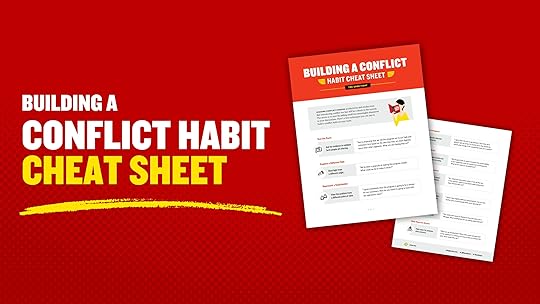 Conflict Habit Cheat Sheet
Conflict Habit Cheat Sheet
 Conflict Debt Assessment
Conflict Debt Assessment
 A Game Plan for That Conversation You’ve Been Putting Off
A Game Plan for That Conversation You’ve Been Putting Off
 If Your Team Agrees on Everything, Working Together Is Pointless
If Your Team Agrees on Everything, Working Together Is Pointless
 The Key to Preventing Generational Tension Is Remembering That Everyone Wants to Feel Valued
The Key to Preventing Generational Tension Is Remembering That Everyone Wants to Feel Valued
 A Mental Trick to Help with Challenging Conversations
A Mental Trick to Help with Challenging Conversations
 Reduce Passive-Aggressive Behavior on Your Team
Reduce Passive-Aggressive Behavior on Your Team
 How to Have Tough Conversations About Returning to the Office
How to Have Tough Conversations About Returning to the Office
 An Exercise to Help Your Team Feel More Comfortable with Conflict
An Exercise to Help Your Team Feel More Comfortable with Conflict
 How to De-Escalate an Argument with a Coworker
How to De-Escalate an Argument with a Coworker
 How to Resolve Conflicts with a Remote Coworker
How to Resolve Conflicts with a Remote Coworker
 How to Tell the Difference Between Venting and Office Gossip
How to Tell the Difference Between Venting and Office Gossip
 Conflict Strategies for Nice People
Conflict Strategies for Nice People
 The Conflict Resolution Skills Every Project Manager Needs
The Conflict Resolution Skills Every Project Manager Needs
 How to Motivate Someone You Don’t Like
How to Motivate Someone You Don’t Like
 When an Argument Gets Too Heated, Here’s What to Say
When an Argument Gets Too Heated, Here’s What to Say
 Why you should stop avoiding conflict in the workplace
Why you should stop avoiding conflict in the workplace
 Managing Two People Who Hate Each Other
Managing Two People Who Hate Each Other
 Let Your Team Have That Heated Conversation
Let Your Team Have That Heated Conversation The post 100 Conflict Questions appeared first on Liane Davey.
Conflict Debt Assessment
Conventional wisdom holds that conflict is bad for productivity and corrosive to trust and engagement. It’s just not true. There is a steady stream of contentious issues every individual, team, and organization needs to resolve. Unfortunately, because most people don’t like conflicts, we tend to duck, dodge, and defer them. The result is conflict debt.
Measure Your Conflict Debt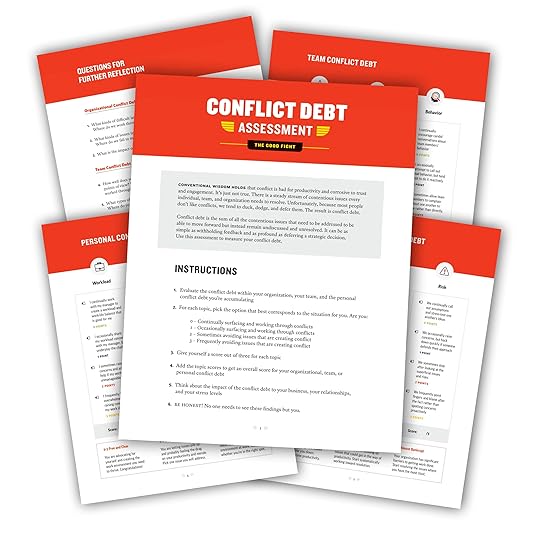 Prefer Something More Interactive? More on Conflict #pcp_wrapper-16285:not(.sps-glossary-layout) .sp-pcp-row,#pcp_wrapper-16285 .sps-glossary-items-group .sps-glossary-items-content {margin-right: -10px;margin-left: -10px;}#pcp_wrapper-16285 .sp-pcp-row [class*='sp-pcp-col-'],#pcp_wrapper-16285 .sp-pcp-row .sp-pcp-block-hierarchical{padding-right: 10px;padding-left: 10px; padding-bottom:20px;}.pcp-wrapper-16285 .sp-pcp-title a,.pcp-modal-16285 .sp-pcp-title, .pcp-wrapper-16285 .pcp-collapse-header a{text-align: left;text-transform: none;font-size: 20px;line-height: 24px;letter-spacing: 0px;color: #111;display: inherit;}.pcp-wrapper-16285 .sp-pcp-title, .pcp-modal-16285 .sp-pcp-title {margin: 0px 0px 9px 0px;}.pcp-wrapper-16285 .pcp-collapse-header a{display: inline-block;}.pcp-modal-16285 .sp-pcp-title{text-align: left;color: #111; display: block;}.pcp-wrapper-16285 .sp-pcp-title a:hover,.pcp-wrapper-16285 .pcp-collapse-header:hover a{color: #e1624b;}#pcp_wrapper-16285 .pcp-carousel-fade:not(.swiper-rtl) .swiper-slide .sp-smart-pro-item:not(:last-child), #pcp_wrapper-16285 .swiper-cube:not(.swiper-rtl) .swiper-slide [class~='sp-smart-pro-item'], #pcp_wrapper-16285 .swiper-flip:not(.swiper-rtl) .swiper-slide [class~='sp-smart-pro-item']{margin-right:20px;}#pcp_wrapper-16285 .pcp-carousel-fade.swiper-rtl .swiper-slide .sp-smart-pro-item:not(:last-child), #pcp_wrapper-16285 .swipe-cube.swiper-rtl .swiper-slide [class~='sp-smart-pro-item'], #pcp_wrapper-16285 .swiper-flip.swiper-rtl .swiper-slide [class~='sp-smart-pro-item']{margin-left:20px;}#pcp_wrapper-16285 .pcp-button-prev, #pcp_wrapper-16285 .pcp-button-next{ background-image: none; background-size: auto; background-color: #fff; font-size: 18px; height: 33px; width: 33px; margin-top: 8px; border: 1px solid #aaa; text-align: center; line-height: 30px; -webkit-transition: 0.3s; border-radius: 0px; }#pcp_wrapper-16285 .pcp-button-prev:hover, #pcp_wrapper-16285 .pcp-button-next:hover{ background-color: #D64224; border-color: #D64224; } #pcp_wrapper-16285 .pcp-button-prev i, #pcp_wrapper-16285 .pcp-button-next i{ color: #aaa; } #pcp_wrapper-16285 .pcp-button-prev:hover i, #pcp_wrapper-16285 .pcp-button-next:hover i{ color: #fff; } #pcp_wrapper-16285.pcp-carousel-wrapper .sp-pcp-post{ margin-top: 0; } #pcp_wrapper-16285 .pcp-pagination:is(.dots,.dynamic,.strokes) .swiper-pagination-bullet{ background: #cccccc; } #pcp_wrapper-16285 .pcp-pagination:is(.dots,.dynamic,.strokes) .swiper-pagination-bullet-active { background: #D64224; } #pcp_wrapper-16285 .number .swiper-pagination-bullet{ color: #ffffff; background: #444444; } #pcp_wrapper-16285 .number .swiper-pagination-bullet-active, #pcp_wrapper-16285 .number .swiper-pagination-bullet:hover{ color: #ffffff; background: #e1624b; }#pcp_wrapper-16285 .sp-pcp-carousel .pcp-pagination-scrollbar{ background: #cccccc; }#pcp_wrapper-16285 .sp-pcp-carousel .pcp-pagination-scrollbar .swiper-scrollbar-drag{ background: #D64224; }#pcp_wrapper-16285 .pcp-filter-bar ~ .sp-pcp-carousel.top_right, #pcp_wrapper-16285 .pcp-filter-bar ~ .sp-pcp-carousel.top_center, #pcp_wrapper-16285 .pcp-filter-bar ~ .sp-pcp-carousel.top_left {padding-top: 0px;}.pcp-modal-16285 .sp-pcp-post-content,.pcp-modal-16285 .sp-pcp-post-content p,.pcp-modal-16285 .sp-pcp-post-content * {color: #444;}#pcp_wrapper-16285 .sp-pcp-post ,#pcp_wrapper-16285 .sp-pcp-post td, #pcp_wrapper-16285 .table-responsive th {border: 0px solid #e2e2e2; border-radius:10px;}#pcp_wrapper-16285 .sp-pcp-post{background-color: transparent;}#pcp_wrapper-16285 .sp-pcp-post {padding: 10px 0 0 0;}#pcp_wrapper-16285 .sp-pcp-post-details {padding: 0 0 0 0;}#pcp_wrapper-16285 .sp-pcp-post .pcp-post-thumb-wrapper{margin: 0px 0px 11px 0px;}.pcp-modal-16285 .sp-pcp-post .sp-pcp-post-thumb-area {margin: 0px 0px 11px 0px;}#pcp_wrapper-16285 .sp-overlay.sp-pcp-post .pcp-post-thumb-wrapper,#pcp_wrapper-16285 .left-thumb.sp-pcp-post .pcp-post-thumb-wrapper,#pcp_wrapper-16285 .right-thumb.sp-pcp-post .pcp-post-thumb-wrapper,#pcp_wrapper-16285 .sp-pcp-content-box.sp-pcp-post .pcp-post-thumb-wrapper{margin: 0;}#pcp_wrapper-16285 .pcp-post-thumb-wrapper{border: 0px solid #dddddd;border-radius:0px;}.pcp-wrapper-16285 .sp_pcp_cf_list,.pcp-popup-16285 .sp_pcp_cf_list{text-align: left;text-transform: none;font-size: 14px;line-height: 18px;letter-spacing: 0px;color: #888;margin: 0px 0px 15px 0px;}.pcp-popup-16285 .sp_pcp_cf_list{color: #888;}.pcp-wrapper-16285 .sp-pcp-post .pcp-category a,.pcp-wrapper-16285 .sp-pcp-post .sp-pcp-post-meta ul li{margin: 0px 5px 5px 0px;}.pcp-wrapper-16285 .sp-pcp-post-meta li,.pcp-wrapper-16285 td.sp-pcp-post-meta,.pcp-wrapper-16285 .sp-pcp-post-meta ul,.pcp-wrapper-16285 .sp-pcp-post-meta li a,.pcp-popup-16285 .sp-pcp-post-meta ul,.pcp-popup-16285 .sp-pcp-post-meta li,.pcp-popup-16285 .sp-pcp-post-meta li a{text-transform: none;font-size: 14px;line-height: 16px;letter-spacing: 0px;color: #888;}.pcp-popup-16285 .sp-pcp-post-meta ul,.pcp-popup-16285 .sp-pcp-post-meta li,.pcp-popup-16285 .sp-pcp-post-meta li a {color: #888;}.pcp-modal-16285 .sp-pcp-post-meta,.pcp-wrapper-16285 .sp-pcp-post-meta{margin: 0px 0px 9px 0px;text-align: left;}.pcp-wrapper-16285 .sp-pcp-post-meta li a:hover,.pcp-popup-16285 .sp-pcp-post-meta li a:hover{color: #e1624b;}#pcp_wrapper-16285 .sp-pcp-post .sp-pcp-social-share{text-align: left;}.pcp-popup-16285 .sp-pcp-post .sp-pcp-social-share{text-align: left;}#pcp_wrapper-16285 .sp-pcp-post .sp-pcp-social-share,.pcp-popup-16285 .sp-pcp-post .sp-pcp-social-share{margin: 0px 0px 0px 0px;}.pcp-popup-16285 .sp-pcp-post .sp-pcp-social-share a.icon_only .fa,#pcp_wrapper-16285 .sp-pcp-post .sp-pcp-social-share a.icon_only .fa{background: transparent;border: none;}#pcp_wrapper-16285 .wp-block-columns {display: flex;gap: 1em;}#pcp_wrapper-16285 .wp-block-columns >.wp-block-column{flex-basis: 100%;}#pcp_wrapper-16285 .pcp-post-pagination .page-numbers.current, #pcp_wrapper-16285 .pcp-post-pagination a.active , #pcp_wrapper-16285 .pcp-post-pagination a:hover{ color: #ffffff; background-color: #e1624b; border-color: #e1624b; }#pcp_wrapper-16285 .pcp-post-pagination,#pcp_wrapper-16285 .pcp-load-more,#pcp_wrapper-16285 .pcp-infinite-scroll-loader{ text-align: left; }#pcp_wrapper-16285 .pcp-post-pagination .page-numbers, .pcp-post-pagination a{ background: #ffffff; color:#5e5e5e; border: 1px solid #bbbbbb;border-radius: 2px;}#pcp_wrapper-16285 .pcp-load-more button{ background: #ffffff; color: #5e5e5e; border: 1px solid #bbbbbb; border-radius: 2px; }#pcp_wrapper-16285 .pcp-load-more button:hover{ background: #e1624b; color: #ffffff; border: 1px solid #e1624b; cursor: pointer; }#pcp_wrapper-16285 .pcp-filter-bar .pcp-filter-by select{border: 1px solid #bbbbbb;border-radius:2px;}#pcp_wrapper-16285 .pcp-filter-bar .pcp-filter-by select:hover{border-color: #e1624b;}#pcp_wrapper-16285 .pcp_ex_filter_bar .pcp-order.pcp-bar.fl-btn input~div { background: #ffffff;color:#5e5e5e; border: 1px solid #bbbbbb;border-radius:2px;font-size: 13px;line-height: 24px;text-transform: uppercase;letter-spacing: 0px;}#pcp_wrapper-16285 .pcp_ex_filter_bar .pcp-order.pcp-bar.fl-btn input:checked~div{ color: #ffffff; background: #e1624b; border-color: #e1624b; }#pcp_wrapper-16285 .pcp_ex_filter_bar .pcp-order.pcp-bar.fl-btn input:hover~div{ color: #ffffff; background: #e1624b; border-color: #e1624b; }#pcp_wrapper-16285 .pcp_ex_filter_bar .pcp-order select{ border: 1px solid #bbbbbb;border-radius:2px;}#pcp_wrapper-16285 .pcp_ex_filter_bar .pcp-order select:hover{ border-color: #e1624b;}#pcp_wrapper-16285 .pcp_ex_filter_bar .pcp-order-by select{ border: 1px solid #bbbbbb;border-radius:2px;}#pcp_wrapper-16285 .pcp_ex_filter_bar .pcp-order-by select:hover{ border-color: #e1624b;}#pcp_wrapper-16285 .pcp-shuffle-filter .taxonomy-group{ margin: 0px 0px 30px 0px; }#pcp_wrapper-16285 .pcp-shuffle-filter .pcp-button{background: transparent;color: #444444;margin: 0px 8px 8px 0px;border: 2px solid #bbbbbb;font-size: 13px;text-transform: uppercase;letter-spacing: 0px;}#pcp_wrapper-16285 .pcp-shuffle-filter .pcp-button:hover, #pcp_wrapper-16285 .pcp-shuffle-filter .pcp-button.is-active { background: #e1624b; color: #ffffff; border: 2px solid #e1624b; } @media (max-width: 768px) {.pcp-wrapper-16285 .sp-pcp-title a{ font-size: 18px; line-height: 22px; }.pcp-wrapper-16285 .sp-pcp-post-meta li, .pcp-wrapper-16285 .sp-pcp-post-meta li a { font-size: 14px; line-height: 16px; } .pcp-wrapper-16285 .sp_pcp_cf_list{ font-size: 14px; line-height: 18px; } }@media (max-width: 420px) {.pcp-wrapper-16285 .sp-pcp-title a{ font-size: 16px; line-height: 20px; }.pcp-wrapper-16285 .sp-pcp-post-meta li, .pcp-wrapper-16285 .sp-pcp-post-meta li a{ font-size: 12px; line-height: 16px; } .pcp-wrapper-16285 .sp_pcp_cf_list{ font-size: 12px; line-height: 16px; } }#pcp_wrapper-16285 .pcp-table-layout table tbody tr.sp-pcp-post:nth-child(even) { background-color: hsl(0deg 0% 60% / 10%);}.sp-pcp-row .sp-pcp-block-6 { flex: 1 1 calc(50% );}@media (min-width: 1200px) { .sp-pcp-row .sp-pcp-col-xl-1 { flex: 1 1 100%; max-width: 100%; } .sp-pcp-row .sp-pcp-col-xl-2 { flex: 1 1 calc(50% ); max-width: calc(50% ); } .sp-pcp-row .sp-pcp-col-xl-3 { flex: 1 1 calc(33.22% ); max-width: calc(33.22% ); } .sp-pcp-row .sp-pcp-col-xl-4 { flex: 1 1 25%; max-width: 25%; } .sp-pcp-row .sp-pcp-col-xl-5 { flex: 1 1 calc(20% ); max-width: calc(20% ); } .sp-pcp-row .sp-pcp-col-xl-6 { flex: 1 1 calc(16.66% ); max-width: calc(16.66% ); } .sp-pcp-row .sp-pcp-col-xl-7 { flex: 1 1 calc(14.285% );max-width: calc(14.285% ); } .sp-pcp-row .sp-pcp-col-xl-8 { flex: 1 1 calc(12.5% );max-width: calc(12.5% ); }}@media (max-width: 1200px) { .sp-pcp-row .sp-pcp-col-lg-1 { flex: 1 1 100%; max-width: 100%; } .sp-pcp-row .sp-pcp-col-lg-2 { flex: 1 1 calc(50% );max-width: calc(50% ); } .sp-pcp-row .sp-pcp-col-lg-3 { flex: 1 1 calc(33.22% ); max-width: calc(33.22% ); } .sp-pcp-row .sp-pcp-col-lg-4 { flex: 1 1 calc(25% ); max-width: calc(25% ); } .sp-pcp-row .sp-pcp-col-lg-5 { flex: 1 1 calc(20% ); max-width: calc(20% ); } .sp-pcp-row .sp-pcp-col-lg-6 { flex: 1 1 calc(16.66% ); max-width: calc(16.66% ); } .sp-pcp-row .sp-pcp-col-lg-7 { flex: 1 1 calc(14.285% ); max-width: calc(14.285% ); } .sp-pcp-row .sp-pcp-col-lg-8 { flex: 1 1 calc(12.5% ); max-width: calc(12.5% ); }}@media (max-width: 992px) { .sp-pcp-row .sp-pcp-col-md-1 { flex: 1 1 100%; max-width: 100%; } .sp-pcp-row .sp-pcp-col-md-2 { flex: 1 1 calc(50% ); max-width: calc(50% ); } .sp-pcp-row .sp-pcp-col-md-2-5 { flex: 1 1 calc(75% ); max-width: calc(75% ); } .sp-pcp-row .sp-pcp-col-md-3 { flex: 1 1 calc(33.22% ); max-width: calc(33.22% ); } .sp-pcp-row .sp-pcp-col-md-4 { flex: 1 1 calc(25% ); max-width: 25%; } .sp-pcp-row .sp-pcp-col-md-5 { flex: 1 1 calc(20% ); max-width: calc(25% ); } .sp-pcp-row .sp-pcp-col-md-6 { flex: 1 1 calc(16.66% ); max-width: calc(16.66% ); } .sp-pcp-row .sp-pcp-col-md-7 { flex: 1 1 calc(14.285% ); max-width: calc(14.285% ); } .sp-pcp-row .sp-pcp-col-md-8 { flex: 1 1 calc(12.5% ); max-width: calc(12.5% ); }}@media (max-width: 768px) { .sp-pcp-row .sp-pcp-col-sm-1 { flex: 1 1 100%; max-width: 100%; } .sp-pcp-row .sp-pcp-col-sm-2 { flex: 1 1 calc(50% ); max-width: calc(50% ); } .sp-pcp-row .sp-pcp-col-sm-2-5 { flex: 1 1 calc(75% ); max-width: calc(75% ); } .sp-pcp-row .sp-pcp-col-sm-3 { flex: 1 1 calc(33.22% ); max-width: calc(33.22% ); } .sp-pcp-row .sp-pcp-col-sm-4 { flex: 1 1 calc(25% ); max-width: calc(25% ); } .sp-pcp-row .sp-pcp-col-sm-5 { flex: 1 1 calc(20% ); max-width: calc(20% ); } .sp-pcp-row .sp-pcp-col-sm-6 { flex: 1 1 calc(16.66% ); max-width: calc(16.66% ); } .sp-pcp-row .sp-pcp-col-sm-7 { flex: 1 1 calc(14.285% ); max-width: calc(14.285% ); } .sp-pcp-row .sp-pcp-col-sm-8 { flex: 1 1 calc(12.5% ); max-width: calc(12.5% ); }}.pcp-post-pagination.pcp-on-mobile { display: none;}@media (max-width: 576px) {.sp-pcp-row .sp-pcp-col-xs-1 { flex: 1 1 100%; max-width: 100%; } .sp-pcp-row .sp-pcp-col-xs-2 { flex: 1 1 calc(50% ); max-width: calc(50% ); } .sp-pcp-row .sp-pcp-col-xs-3 { flex: 1 1 calc(33.22% ); max-width: calc(33.22% ); } .sp-pcp-row .sp-pcp-col-xs-4 { flex: 1 1 calc(25% ); max-width: calc(25% ); } .sp-pcp-row .sp-pcp-col-xs-5 { flex: 1 1 calc(20% ); max-width: calc(20% ); } .sp-pcp-row .sp-pcp-col-xs-6 { flex: 1 1 calc(16.66% ); max-width: calc(16.66% ); } .sp-pcp-row .sp-pcp-col-xs-7 { flex: 1 1 calc(14.285% ); max-width: calc(14.285% ); } .sp-pcp-row .sp-pcp-col-xs-8 { flex: 1 1 calc(12.5% ); max-width: calc(12.5% ); } .pcp-post-pagination.pcp-on-mobile:not(.pcp-hide) { display: block; } .pcp-post-pagination:not(.pcp-on-mobile) { display: none; }}
Prefer Something More Interactive? More on Conflict #pcp_wrapper-16285:not(.sps-glossary-layout) .sp-pcp-row,#pcp_wrapper-16285 .sps-glossary-items-group .sps-glossary-items-content {margin-right: -10px;margin-left: -10px;}#pcp_wrapper-16285 .sp-pcp-row [class*='sp-pcp-col-'],#pcp_wrapper-16285 .sp-pcp-row .sp-pcp-block-hierarchical{padding-right: 10px;padding-left: 10px; padding-bottom:20px;}.pcp-wrapper-16285 .sp-pcp-title a,.pcp-modal-16285 .sp-pcp-title, .pcp-wrapper-16285 .pcp-collapse-header a{text-align: left;text-transform: none;font-size: 20px;line-height: 24px;letter-spacing: 0px;color: #111;display: inherit;}.pcp-wrapper-16285 .sp-pcp-title, .pcp-modal-16285 .sp-pcp-title {margin: 0px 0px 9px 0px;}.pcp-wrapper-16285 .pcp-collapse-header a{display: inline-block;}.pcp-modal-16285 .sp-pcp-title{text-align: left;color: #111; display: block;}.pcp-wrapper-16285 .sp-pcp-title a:hover,.pcp-wrapper-16285 .pcp-collapse-header:hover a{color: #e1624b;}#pcp_wrapper-16285 .pcp-carousel-fade:not(.swiper-rtl) .swiper-slide .sp-smart-pro-item:not(:last-child), #pcp_wrapper-16285 .swiper-cube:not(.swiper-rtl) .swiper-slide [class~='sp-smart-pro-item'], #pcp_wrapper-16285 .swiper-flip:not(.swiper-rtl) .swiper-slide [class~='sp-smart-pro-item']{margin-right:20px;}#pcp_wrapper-16285 .pcp-carousel-fade.swiper-rtl .swiper-slide .sp-smart-pro-item:not(:last-child), #pcp_wrapper-16285 .swipe-cube.swiper-rtl .swiper-slide [class~='sp-smart-pro-item'], #pcp_wrapper-16285 .swiper-flip.swiper-rtl .swiper-slide [class~='sp-smart-pro-item']{margin-left:20px;}#pcp_wrapper-16285 .pcp-button-prev, #pcp_wrapper-16285 .pcp-button-next{ background-image: none; background-size: auto; background-color: #fff; font-size: 18px; height: 33px; width: 33px; margin-top: 8px; border: 1px solid #aaa; text-align: center; line-height: 30px; -webkit-transition: 0.3s; border-radius: 0px; }#pcp_wrapper-16285 .pcp-button-prev:hover, #pcp_wrapper-16285 .pcp-button-next:hover{ background-color: #D64224; border-color: #D64224; } #pcp_wrapper-16285 .pcp-button-prev i, #pcp_wrapper-16285 .pcp-button-next i{ color: #aaa; } #pcp_wrapper-16285 .pcp-button-prev:hover i, #pcp_wrapper-16285 .pcp-button-next:hover i{ color: #fff; } #pcp_wrapper-16285.pcp-carousel-wrapper .sp-pcp-post{ margin-top: 0; } #pcp_wrapper-16285 .pcp-pagination:is(.dots,.dynamic,.strokes) .swiper-pagination-bullet{ background: #cccccc; } #pcp_wrapper-16285 .pcp-pagination:is(.dots,.dynamic,.strokes) .swiper-pagination-bullet-active { background: #D64224; } #pcp_wrapper-16285 .number .swiper-pagination-bullet{ color: #ffffff; background: #444444; } #pcp_wrapper-16285 .number .swiper-pagination-bullet-active, #pcp_wrapper-16285 .number .swiper-pagination-bullet:hover{ color: #ffffff; background: #e1624b; }#pcp_wrapper-16285 .sp-pcp-carousel .pcp-pagination-scrollbar{ background: #cccccc; }#pcp_wrapper-16285 .sp-pcp-carousel .pcp-pagination-scrollbar .swiper-scrollbar-drag{ background: #D64224; }#pcp_wrapper-16285 .pcp-filter-bar ~ .sp-pcp-carousel.top_right, #pcp_wrapper-16285 .pcp-filter-bar ~ .sp-pcp-carousel.top_center, #pcp_wrapper-16285 .pcp-filter-bar ~ .sp-pcp-carousel.top_left {padding-top: 0px;}.pcp-modal-16285 .sp-pcp-post-content,.pcp-modal-16285 .sp-pcp-post-content p,.pcp-modal-16285 .sp-pcp-post-content * {color: #444;}#pcp_wrapper-16285 .sp-pcp-post ,#pcp_wrapper-16285 .sp-pcp-post td, #pcp_wrapper-16285 .table-responsive th {border: 0px solid #e2e2e2; border-radius:10px;}#pcp_wrapper-16285 .sp-pcp-post{background-color: transparent;}#pcp_wrapper-16285 .sp-pcp-post {padding: 10px 0 0 0;}#pcp_wrapper-16285 .sp-pcp-post-details {padding: 0 0 0 0;}#pcp_wrapper-16285 .sp-pcp-post .pcp-post-thumb-wrapper{margin: 0px 0px 11px 0px;}.pcp-modal-16285 .sp-pcp-post .sp-pcp-post-thumb-area {margin: 0px 0px 11px 0px;}#pcp_wrapper-16285 .sp-overlay.sp-pcp-post .pcp-post-thumb-wrapper,#pcp_wrapper-16285 .left-thumb.sp-pcp-post .pcp-post-thumb-wrapper,#pcp_wrapper-16285 .right-thumb.sp-pcp-post .pcp-post-thumb-wrapper,#pcp_wrapper-16285 .sp-pcp-content-box.sp-pcp-post .pcp-post-thumb-wrapper{margin: 0;}#pcp_wrapper-16285 .pcp-post-thumb-wrapper{border: 0px solid #dddddd;border-radius:0px;}.pcp-wrapper-16285 .sp_pcp_cf_list,.pcp-popup-16285 .sp_pcp_cf_list{text-align: left;text-transform: none;font-size: 14px;line-height: 18px;letter-spacing: 0px;color: #888;margin: 0px 0px 15px 0px;}.pcp-popup-16285 .sp_pcp_cf_list{color: #888;}.pcp-wrapper-16285 .sp-pcp-post .pcp-category a,.pcp-wrapper-16285 .sp-pcp-post .sp-pcp-post-meta ul li{margin: 0px 5px 5px 0px;}.pcp-wrapper-16285 .sp-pcp-post-meta li,.pcp-wrapper-16285 td.sp-pcp-post-meta,.pcp-wrapper-16285 .sp-pcp-post-meta ul,.pcp-wrapper-16285 .sp-pcp-post-meta li a,.pcp-popup-16285 .sp-pcp-post-meta ul,.pcp-popup-16285 .sp-pcp-post-meta li,.pcp-popup-16285 .sp-pcp-post-meta li a{text-transform: none;font-size: 14px;line-height: 16px;letter-spacing: 0px;color: #888;}.pcp-popup-16285 .sp-pcp-post-meta ul,.pcp-popup-16285 .sp-pcp-post-meta li,.pcp-popup-16285 .sp-pcp-post-meta li a {color: #888;}.pcp-modal-16285 .sp-pcp-post-meta,.pcp-wrapper-16285 .sp-pcp-post-meta{margin: 0px 0px 9px 0px;text-align: left;}.pcp-wrapper-16285 .sp-pcp-post-meta li a:hover,.pcp-popup-16285 .sp-pcp-post-meta li a:hover{color: #e1624b;}#pcp_wrapper-16285 .sp-pcp-post .sp-pcp-social-share{text-align: left;}.pcp-popup-16285 .sp-pcp-post .sp-pcp-social-share{text-align: left;}#pcp_wrapper-16285 .sp-pcp-post .sp-pcp-social-share,.pcp-popup-16285 .sp-pcp-post .sp-pcp-social-share{margin: 0px 0px 0px 0px;}.pcp-popup-16285 .sp-pcp-post .sp-pcp-social-share a.icon_only .fa,#pcp_wrapper-16285 .sp-pcp-post .sp-pcp-social-share a.icon_only .fa{background: transparent;border: none;}#pcp_wrapper-16285 .wp-block-columns {display: flex;gap: 1em;}#pcp_wrapper-16285 .wp-block-columns >.wp-block-column{flex-basis: 100%;}#pcp_wrapper-16285 .pcp-post-pagination .page-numbers.current, #pcp_wrapper-16285 .pcp-post-pagination a.active , #pcp_wrapper-16285 .pcp-post-pagination a:hover{ color: #ffffff; background-color: #e1624b; border-color: #e1624b; }#pcp_wrapper-16285 .pcp-post-pagination,#pcp_wrapper-16285 .pcp-load-more,#pcp_wrapper-16285 .pcp-infinite-scroll-loader{ text-align: left; }#pcp_wrapper-16285 .pcp-post-pagination .page-numbers, .pcp-post-pagination a{ background: #ffffff; color:#5e5e5e; border: 1px solid #bbbbbb;border-radius: 2px;}#pcp_wrapper-16285 .pcp-load-more button{ background: #ffffff; color: #5e5e5e; border: 1px solid #bbbbbb; border-radius: 2px; }#pcp_wrapper-16285 .pcp-load-more button:hover{ background: #e1624b; color: #ffffff; border: 1px solid #e1624b; cursor: pointer; }#pcp_wrapper-16285 .pcp-filter-bar .pcp-filter-by select{border: 1px solid #bbbbbb;border-radius:2px;}#pcp_wrapper-16285 .pcp-filter-bar .pcp-filter-by select:hover{border-color: #e1624b;}#pcp_wrapper-16285 .pcp_ex_filter_bar .pcp-order.pcp-bar.fl-btn input~div { background: #ffffff;color:#5e5e5e; border: 1px solid #bbbbbb;border-radius:2px;font-size: 13px;line-height: 24px;text-transform: uppercase;letter-spacing: 0px;}#pcp_wrapper-16285 .pcp_ex_filter_bar .pcp-order.pcp-bar.fl-btn input:checked~div{ color: #ffffff; background: #e1624b; border-color: #e1624b; }#pcp_wrapper-16285 .pcp_ex_filter_bar .pcp-order.pcp-bar.fl-btn input:hover~div{ color: #ffffff; background: #e1624b; border-color: #e1624b; }#pcp_wrapper-16285 .pcp_ex_filter_bar .pcp-order select{ border: 1px solid #bbbbbb;border-radius:2px;}#pcp_wrapper-16285 .pcp_ex_filter_bar .pcp-order select:hover{ border-color: #e1624b;}#pcp_wrapper-16285 .pcp_ex_filter_bar .pcp-order-by select{ border: 1px solid #bbbbbb;border-radius:2px;}#pcp_wrapper-16285 .pcp_ex_filter_bar .pcp-order-by select:hover{ border-color: #e1624b;}#pcp_wrapper-16285 .pcp-shuffle-filter .taxonomy-group{ margin: 0px 0px 30px 0px; }#pcp_wrapper-16285 .pcp-shuffle-filter .pcp-button{background: transparent;color: #444444;margin: 0px 8px 8px 0px;border: 2px solid #bbbbbb;font-size: 13px;text-transform: uppercase;letter-spacing: 0px;}#pcp_wrapper-16285 .pcp-shuffle-filter .pcp-button:hover, #pcp_wrapper-16285 .pcp-shuffle-filter .pcp-button.is-active { background: #e1624b; color: #ffffff; border: 2px solid #e1624b; } @media (max-width: 768px) {.pcp-wrapper-16285 .sp-pcp-title a{ font-size: 18px; line-height: 22px; }.pcp-wrapper-16285 .sp-pcp-post-meta li, .pcp-wrapper-16285 .sp-pcp-post-meta li a { font-size: 14px; line-height: 16px; } .pcp-wrapper-16285 .sp_pcp_cf_list{ font-size: 14px; line-height: 18px; } }@media (max-width: 420px) {.pcp-wrapper-16285 .sp-pcp-title a{ font-size: 16px; line-height: 20px; }.pcp-wrapper-16285 .sp-pcp-post-meta li, .pcp-wrapper-16285 .sp-pcp-post-meta li a{ font-size: 12px; line-height: 16px; } .pcp-wrapper-16285 .sp_pcp_cf_list{ font-size: 12px; line-height: 16px; } }#pcp_wrapper-16285 .pcp-table-layout table tbody tr.sp-pcp-post:nth-child(even) { background-color: hsl(0deg 0% 60% / 10%);}.sp-pcp-row .sp-pcp-block-6 { flex: 1 1 calc(50% );}@media (min-width: 1200px) { .sp-pcp-row .sp-pcp-col-xl-1 { flex: 1 1 100%; max-width: 100%; } .sp-pcp-row .sp-pcp-col-xl-2 { flex: 1 1 calc(50% ); max-width: calc(50% ); } .sp-pcp-row .sp-pcp-col-xl-3 { flex: 1 1 calc(33.22% ); max-width: calc(33.22% ); } .sp-pcp-row .sp-pcp-col-xl-4 { flex: 1 1 25%; max-width: 25%; } .sp-pcp-row .sp-pcp-col-xl-5 { flex: 1 1 calc(20% ); max-width: calc(20% ); } .sp-pcp-row .sp-pcp-col-xl-6 { flex: 1 1 calc(16.66% ); max-width: calc(16.66% ); } .sp-pcp-row .sp-pcp-col-xl-7 { flex: 1 1 calc(14.285% );max-width: calc(14.285% ); } .sp-pcp-row .sp-pcp-col-xl-8 { flex: 1 1 calc(12.5% );max-width: calc(12.5% ); }}@media (max-width: 1200px) { .sp-pcp-row .sp-pcp-col-lg-1 { flex: 1 1 100%; max-width: 100%; } .sp-pcp-row .sp-pcp-col-lg-2 { flex: 1 1 calc(50% );max-width: calc(50% ); } .sp-pcp-row .sp-pcp-col-lg-3 { flex: 1 1 calc(33.22% ); max-width: calc(33.22% ); } .sp-pcp-row .sp-pcp-col-lg-4 { flex: 1 1 calc(25% ); max-width: calc(25% ); } .sp-pcp-row .sp-pcp-col-lg-5 { flex: 1 1 calc(20% ); max-width: calc(20% ); } .sp-pcp-row .sp-pcp-col-lg-6 { flex: 1 1 calc(16.66% ); max-width: calc(16.66% ); } .sp-pcp-row .sp-pcp-col-lg-7 { flex: 1 1 calc(14.285% ); max-width: calc(14.285% ); } .sp-pcp-row .sp-pcp-col-lg-8 { flex: 1 1 calc(12.5% ); max-width: calc(12.5% ); }}@media (max-width: 992px) { .sp-pcp-row .sp-pcp-col-md-1 { flex: 1 1 100%; max-width: 100%; } .sp-pcp-row .sp-pcp-col-md-2 { flex: 1 1 calc(50% ); max-width: calc(50% ); } .sp-pcp-row .sp-pcp-col-md-2-5 { flex: 1 1 calc(75% ); max-width: calc(75% ); } .sp-pcp-row .sp-pcp-col-md-3 { flex: 1 1 calc(33.22% ); max-width: calc(33.22% ); } .sp-pcp-row .sp-pcp-col-md-4 { flex: 1 1 calc(25% ); max-width: 25%; } .sp-pcp-row .sp-pcp-col-md-5 { flex: 1 1 calc(20% ); max-width: calc(25% ); } .sp-pcp-row .sp-pcp-col-md-6 { flex: 1 1 calc(16.66% ); max-width: calc(16.66% ); } .sp-pcp-row .sp-pcp-col-md-7 { flex: 1 1 calc(14.285% ); max-width: calc(14.285% ); } .sp-pcp-row .sp-pcp-col-md-8 { flex: 1 1 calc(12.5% ); max-width: calc(12.5% ); }}@media (max-width: 768px) { .sp-pcp-row .sp-pcp-col-sm-1 { flex: 1 1 100%; max-width: 100%; } .sp-pcp-row .sp-pcp-col-sm-2 { flex: 1 1 calc(50% ); max-width: calc(50% ); } .sp-pcp-row .sp-pcp-col-sm-2-5 { flex: 1 1 calc(75% ); max-width: calc(75% ); } .sp-pcp-row .sp-pcp-col-sm-3 { flex: 1 1 calc(33.22% ); max-width: calc(33.22% ); } .sp-pcp-row .sp-pcp-col-sm-4 { flex: 1 1 calc(25% ); max-width: calc(25% ); } .sp-pcp-row .sp-pcp-col-sm-5 { flex: 1 1 calc(20% ); max-width: calc(20% ); } .sp-pcp-row .sp-pcp-col-sm-6 { flex: 1 1 calc(16.66% ); max-width: calc(16.66% ); } .sp-pcp-row .sp-pcp-col-sm-7 { flex: 1 1 calc(14.285% ); max-width: calc(14.285% ); } .sp-pcp-row .sp-pcp-col-sm-8 { flex: 1 1 calc(12.5% ); max-width: calc(12.5% ); }}.pcp-post-pagination.pcp-on-mobile { display: none;}@media (max-width: 576px) {.sp-pcp-row .sp-pcp-col-xs-1 { flex: 1 1 100%; max-width: 100%; } .sp-pcp-row .sp-pcp-col-xs-2 { flex: 1 1 calc(50% ); max-width: calc(50% ); } .sp-pcp-row .sp-pcp-col-xs-3 { flex: 1 1 calc(33.22% ); max-width: calc(33.22% ); } .sp-pcp-row .sp-pcp-col-xs-4 { flex: 1 1 calc(25% ); max-width: calc(25% ); } .sp-pcp-row .sp-pcp-col-xs-5 { flex: 1 1 calc(20% ); max-width: calc(20% ); } .sp-pcp-row .sp-pcp-col-xs-6 { flex: 1 1 calc(16.66% ); max-width: calc(16.66% ); } .sp-pcp-row .sp-pcp-col-xs-7 { flex: 1 1 calc(14.285% ); max-width: calc(14.285% ); } .sp-pcp-row .sp-pcp-col-xs-8 { flex: 1 1 calc(12.5% ); max-width: calc(12.5% ); } .pcp-post-pagination.pcp-on-mobile:not(.pcp-hide) { display: block; } .pcp-post-pagination:not(.pcp-on-mobile) { display: none; }}
 The Problem with Agreeing to Disagree
The Problem with Agreeing to Disagree
 How to End a Business Relationship
How to End a Business Relationship
 Good and Bad Apologies
Good and Bad Apologies
 Passing on Feedback for Someone Else
Passing on Feedback for Someone Else
 Productive Versus Unproductive Conflict Resolution
Productive Versus Unproductive Conflict Resolution
 Dos and Don’ts When an Employee Doesn’t Like You
Dos and Don’ts When an Employee Doesn’t Like You
 Tension is a good thing
Tension is a good thing
 How to deal with passive aggressive people
How to deal with passive aggressive people
 Reducing Conflict Fatigue
Reducing Conflict Fatigue
 What to Do When Your Boss Won’t Take No for an Answer
What to Do When Your Boss Won’t Take No for an Answer
 What to Do if You Witness Colleagues Fighting
What to Do if You Witness Colleagues Fighting
 Optimists, Skeptics, and Cynics
Optimists, Skeptics, and Cynics
 Your Value is in Identifying the Problem, Not Solving It
Your Value is in Identifying the Problem, Not Solving It
 Should you pick your battles? – Part II
Should you pick your battles? – Part II
 How to Broach an Uncomfortable Topic
How to Broach an Uncomfortable Topic
 4 secrets of avoiding the conflict spiral
4 secrets of avoiding the conflict spiral
 Why you should stop pushing back
Why you should stop pushing back
 The Steps to Resolve a Conflict at Work
The Steps to Resolve a Conflict at Work
 How do you deal with someone who is always negative about change?
How do you deal with someone who is always negative about change?
 The Importance of Conflict Resolution at Work
The Importance of Conflict Resolution at Work
 Exercise: Fostering a Culture of Productive Conflict
Exercise: Fostering a Culture of Productive Conflict
 Facts Don’t Solve Fights
Facts Don’t Solve Fights
 10 Ways to Help People Say Uncomfortable Things
10 Ways to Help People Say Uncomfortable Things
 Conflict Debt
Conflict Debt
 How to Tell if Your Work Conflict is Healthy
How to Tell if Your Work Conflict is Healthy
 Are Your Teammates Too Sensitive?
Are Your Teammates Too Sensitive?
 When conflict gets emotional
When conflict gets emotional
 New Research on Healthy Conflict
New Research on Healthy Conflict
 How to Have an Uncomfortable Conversation Remotely
How to Have an Uncomfortable Conversation Remotely
 Why Are People So Passive-Aggressive?
Why Are People So Passive-Aggressive?
 How to Stop Being Passive-Aggressive
How to Stop Being Passive-Aggressive
 Why you owe it to your teammates to disagree with them
Why you owe it to your teammates to disagree with them
 The Right Words: The Two Truths
The Right Words: The Two Truths
 How to (inadvertently) start a fight
How to (inadvertently) start a fight
 How to Address a Passive-Aggressive Colleague
How to Address a Passive-Aggressive Colleague
 4 alternatives to throwing your teammate under the bus
4 alternatives to throwing your teammate under the bus
 Managing the Aggressor on Your Team
Managing the Aggressor on Your Team
 What to Say to Prevent Passive-aggressiveness
What to Say to Prevent Passive-aggressiveness
 5 practices that bolster trust on your team
5 practices that bolster trust on your team
 The Vicious Cycle of Bad Behavior
The Vicious Cycle of Bad Behavior
 How to Manage Conflict in Virtual Teams
How to Manage Conflict in Virtual Teams
 Adam Grant versus Brené Brown: Two Truths are Better than One
Adam Grant versus Brené Brown: Two Truths are Better than One
 Getting Your Team Unstuck
Getting Your Team Unstuck
 Should I risk making someone emotional?
Should I risk making someone emotional?
 Recognizing Superpowers
Recognizing Superpowers
 Standing up to powerful bullies
Standing up to powerful bullies
 How to work with emotional data
How to work with emotional data
 Is it Manipulative to Use Productive Conflict Techniques?
Is it Manipulative to Use Productive Conflict Techniques?
 I beg (you) to differ
I beg (you) to differ
 How to take the sting out of conflict (using magic from Harry Potter)
How to take the sting out of conflict (using magic from Harry Potter)
 Disagree with your boss without getting fired
Disagree with your boss without getting fired
 Should I be honest with my colleagues?
Should I be honest with my colleagues?
 Do one uncomfortable thing
Do one uncomfortable thing
 The First Steps to Create a Productive Conflict Habit
The First Steps to Create a Productive Conflict Habit
 How to tone down an argument
How to tone down an argument
 The Case for More Conflict
The Case for More Conflict
 9 Easy Ways to Improve Decision Making on Your Team
9 Easy Ways to Improve Decision Making on Your Team
 How quickly do you trust?
How quickly do you trust?
 When discussions get heated
When discussions get heated
 Don’t pass conflict aversion to the next generation
Don’t pass conflict aversion to the next generation
 5 Ways to make your team more decisive
5 Ways to make your team more decisive
 Held Hostage by the Crier on the Team
Held Hostage by the Crier on the Team
 Bad Advice: Why You Shouldn’t Come with a Solution
Bad Advice: Why You Shouldn’t Come with a Solution
 Trust can’t come at the expense of diversity
Trust can’t come at the expense of diversity
 Can Conflict be Nice?
Can Conflict be Nice?
 Struggling to fit in on a new team
Struggling to fit in on a new team
 Managing underground conflict
Managing underground conflict
 How to Avoid an Argument
How to Avoid an Argument
 Why You Can’t Say No at Work
Why You Can’t Say No at Work
 Should I get involved?
Should I get involved?
 The #1 Crisis Facing Organizations: The Need for More Conflict
The #1 Crisis Facing Organizations: The Need for More Conflict
 Doing an end run
Doing an end run
 Your conflict defaults
Your conflict defaults
 Should you pick your battles? – Part I
Should you pick your battles? – Part I
 Is your team conflict avoidant?
Is your team conflict avoidant?
 3 Benefits of dealing with emotions on your team
3 Benefits of dealing with emotions on your team
 What stresses you out?
What stresses you out?
 Should you mind your own business?
Should you mind your own business?
 Prevent resistance before it starts
Prevent resistance before it starts
 Talent management shenanigans
Talent management shenanigans
 Grievance with a teammate
Grievance with a teammate
 Conflict Habit Cheat Sheet
Conflict Habit Cheat Sheet
 100 Conflict Questions
100 Conflict Questions
 A Game Plan for That Conversation You’ve Been Putting Off
A Game Plan for That Conversation You’ve Been Putting Off
 If Your Team Agrees on Everything, Working Together Is Pointless
If Your Team Agrees on Everything, Working Together Is Pointless
 The Key to Preventing Generational Tension Is Remembering That Everyone Wants to Feel Valued
The Key to Preventing Generational Tension Is Remembering That Everyone Wants to Feel Valued
 A Mental Trick to Help with Challenging Conversations
A Mental Trick to Help with Challenging Conversations
 Reduce Passive-Aggressive Behavior on Your Team
Reduce Passive-Aggressive Behavior on Your Team
 How to Have Tough Conversations About Returning to the Office
How to Have Tough Conversations About Returning to the Office
 An Exercise to Help Your Team Feel More Comfortable with Conflict
An Exercise to Help Your Team Feel More Comfortable with Conflict
 How to De-Escalate an Argument with a Coworker
How to De-Escalate an Argument with a Coworker
 How to Resolve Conflicts with a Remote Coworker
How to Resolve Conflicts with a Remote Coworker
 How to Tell the Difference Between Venting and Office Gossip
How to Tell the Difference Between Venting and Office Gossip
 Conflict Strategies for Nice People
Conflict Strategies for Nice People
 The Conflict Resolution Skills Every Project Manager Needs
The Conflict Resolution Skills Every Project Manager Needs
 How to Motivate Someone You Don’t Like
How to Motivate Someone You Don’t Like
 When an Argument Gets Too Heated, Here’s What to Say
When an Argument Gets Too Heated, Here’s What to Say
 Why you should stop avoiding conflict in the workplace
Why you should stop avoiding conflict in the workplace
 Managing Two People Who Hate Each Other
Managing Two People Who Hate Each Other
 Let Your Team Have That Heated Conversation
Let Your Team Have That Heated Conversation The post Conflict Debt Assessment appeared first on Liane Davey.
January 19, 2025
8 Things to Do to Prevent Multitasking in Meetings
Multitasking is making us less efficient, reducing the quality and creativity of our work, and stressing us out. And yet, it’s the norm rather than the exception, particularly in meetings. If you’re chairing a meeting and want to keep participants’ eyes on the prize, here are steps to prevent multitasking in meetings.
Why People Multitask in MeetingsThere are several reasons why people multitask in meetings. Understanding them will help you address the problem at its root.
Multitasking to Catch Up: People have too many emails, tasks, and requests to complete in the scant time between meetings. They’re just trying to keep their heads above water so they don’t leave a one-hour meeting two hours behind.Responding to Distraction: Some multitasking is triggered by distractions coming from outside the room. They’re getting sucked in by notifications and demands coming at them from many corners.Finding Relief from Anxiety: Maybe it’s what’s going on inside the room or maybe outside, but when things get a little hot, it’s tempting to dissipate that negative energy by being active rather than passive.Reduce Meeting MultitaskingWhen people multitask in your meeting, it creates problems. All manner of problems.
First, if they’re multitasking, they aren’t paying full attention and missing things. You probably have to repeat yourself. Multitasking makes meetings less efficient.
If they miss things, it might come back to bite you later: “I never agreed to that!” “But you were in the meeting when we discussed it?!?” Multitasking can create conflict.
Multitasking can also create animosity among team members as they judge one another for being distracted or signaling that something is more important than the conversation (and, therefore, the people) in the room.
Try these approaches to avoid, or at least minimize, the frequency and duration of multitasking.
1. Shrink the number of participantsResearch at Microsoft showed that the larger the group, the more multitasking there is. That just makes sense. A diffusion of responsibility happens in groups. If you’re meeting with three people, it’s a lot more obvious when you’re not paying attention than if there are 300. When the stakes are high, and you need the focus to match, have as few people in the meeting as possible.
If you have a standing meeting, try frontloading the agenda with items requiring everyone. Pause between items and excuse people who aren’t needed for the latter topics.
2. Shorten the meetingMeeting duration makes a huge difference in the likelihood of multitasking. In a meeting shorter than 20 minutes, multitasking is quite rare. Double the length of the meeting and double the likelihood of multitasking. And if your meeting gets to ninety minutes, the likelihood is six times that of a short meeting. It’s no surprise that the 20-minute meeting coincides with some estimates of how long we can maintain attention on a single task.
Normalize huddles where you accomplish everything you need in 20 minutes. Break longer meetings into no more than 40-minute chunks with breaks between to reset attention.
3. Move it to the afternoonWhen you meet also impacts the amount of multitasking. Microsoft’s research showed that multitasking is more common in morning meetings than in the afternoon. I’m not sure if it’s because there’s still more on people’s plates in the morning or their coffee is making them fidgety, but you might consider moving an important meeting to the afternoon slot.
4. Include more novel contentYou won’t be surprised to hear that recurring meetings have more multitasking than ad hoc meetings. Why? I’m guessing because an ad hoc meeting has a clear and timely purpose, whereas many standing meetings are about as useful as a vestigial tail.
Start by radically trimming the number and duration of standing meetings. Then, focus on making the content more novel, timely, and interesting so people have a reason to pay attention.
5. Cut out the irrelevant partsWho can blame someone with 134 unread messages for doing a little inbox pruning while listening to someone talk about something irrelevant to them?? As a meeting chair, it’s your job to make the meeting content relevant. Get the right people in the room for the topics and clarify the value you need them to add.
You know what’s useless in a meeting—someone reading off a presentation as if it’s storytime. Now, if they used different voices and animated gestures like in storytime, I might be okay with it, but they don’t! If you’ve distributed a primer to convey the content efficiently (please, please use a primer to convey the content efficiently), then skip the presentation and get right to the good stuff.
6. Build in participationThat leads to the following strategy for reducing multitasking: building participation. People’s attention spans for listening to one person drone on are poor, but their focus is strong when expecting to be called on. Even if they aren’t participating, listening to various perspectives on an issue is much more scintillating than listening to one.
7. Reduce distractionsSometimes, it’s just too tempting when a phone buzzes or a notification pops up on a screen. You can’t help but shift to that new input demanding your attention. The biggest problem in my experience is that as soon as one participant in a meeting picks up their phone, two or three follow in short order. It’s reflexive; people don’t even think before picking up their phone.
So, what are you going to do about it in your meeting? Some people do a phone stack. It will get a big groan, but it will work. You can also have a ground rule around multitasking (I like leaving room for grown-ups to decide if they need to prioritize something else, but ask that they leave the room to do so to reduce the temptation on others). I don’t think there’s a right answer, but it requires a conversation, a deliberate choice, and the courage to call it out when someone is contravening your agreement.
8. Manage the workload outside the meetingNot all the strategies involve what you do in the room; some involve managing the torrent outside the room. The more you can do to help people prioritize the conversation and deprioritize the other demands on their time, the less likely they are to multitask. I use this exercise on Unseen Work to start a dialogue with people about what’s on their plate that I might not appreciate.
ConclusionMultitasking reduces productivity, quality, and creativity while increasing stress and anxiety. Don’t allow your meeting to be a den of distraction. Instead, make it worth people’s attention by getting the right people in the room for the proper length of time at the right time. Make the content compelling and make contributing non-negotiable. You might find that more focused meetings get better results and require fewer follow-ups. That would be a virtuous cycle.
Additional ResourcesWhat You Can (and Can’t) Multitask
The Easiest Way to Make Meetings Shorter
Microsoft Research on Multitasking Cao et al Large Scale Analysis of Multitasking Behavior During Remote Meetings
The post 8 Things to Do to Prevent Multitasking in Meetings appeared first on Liane Davey.



